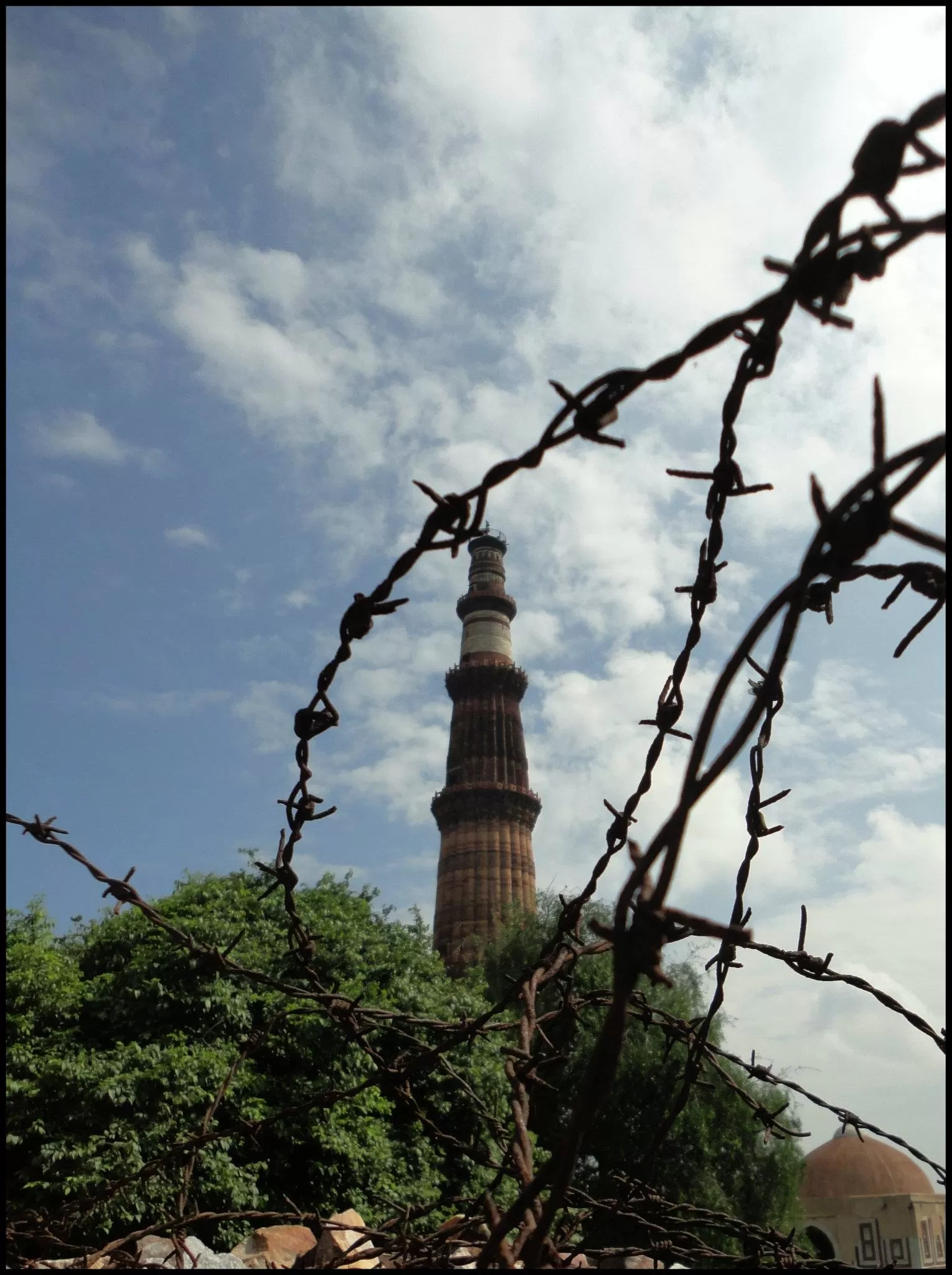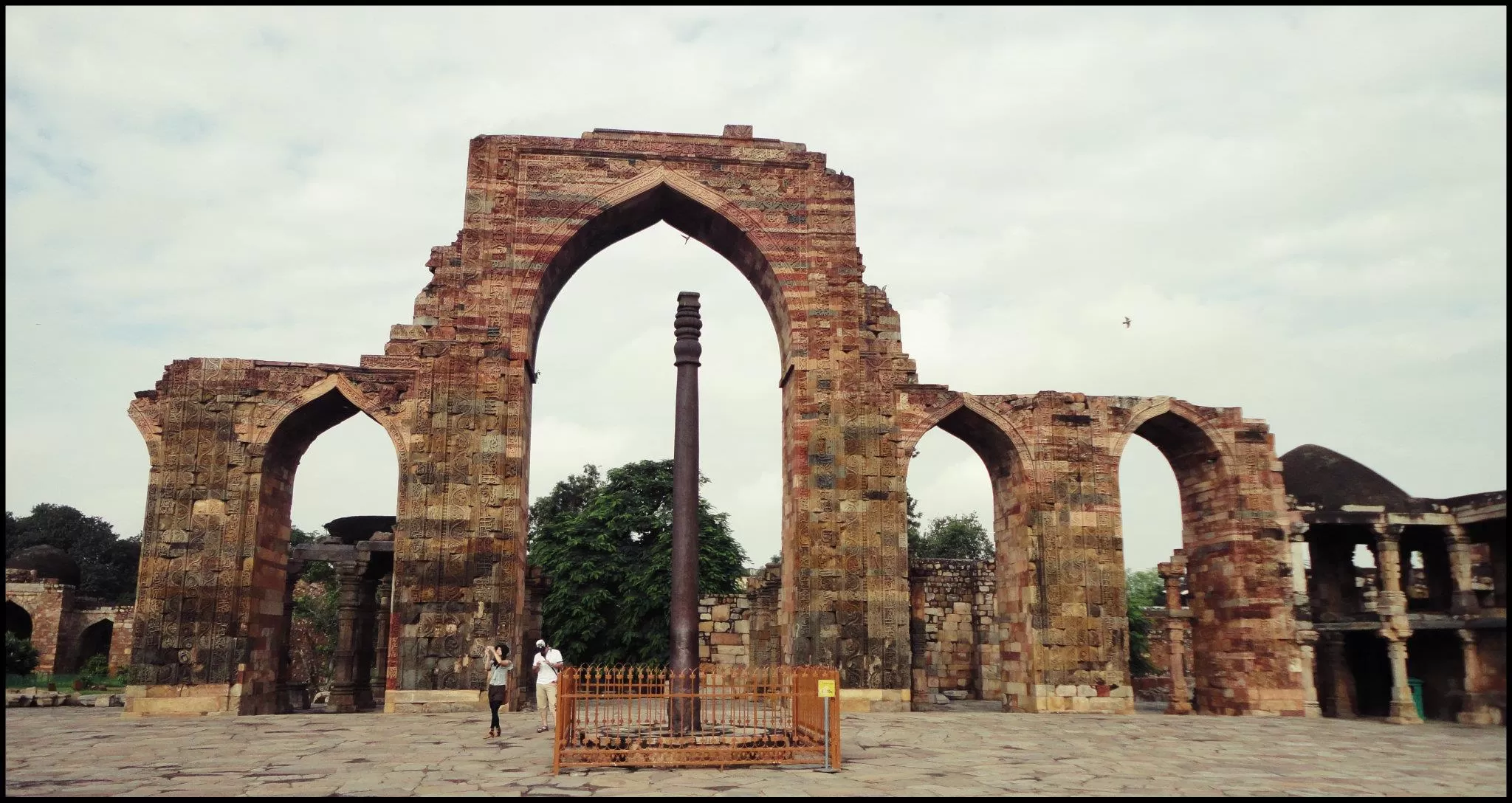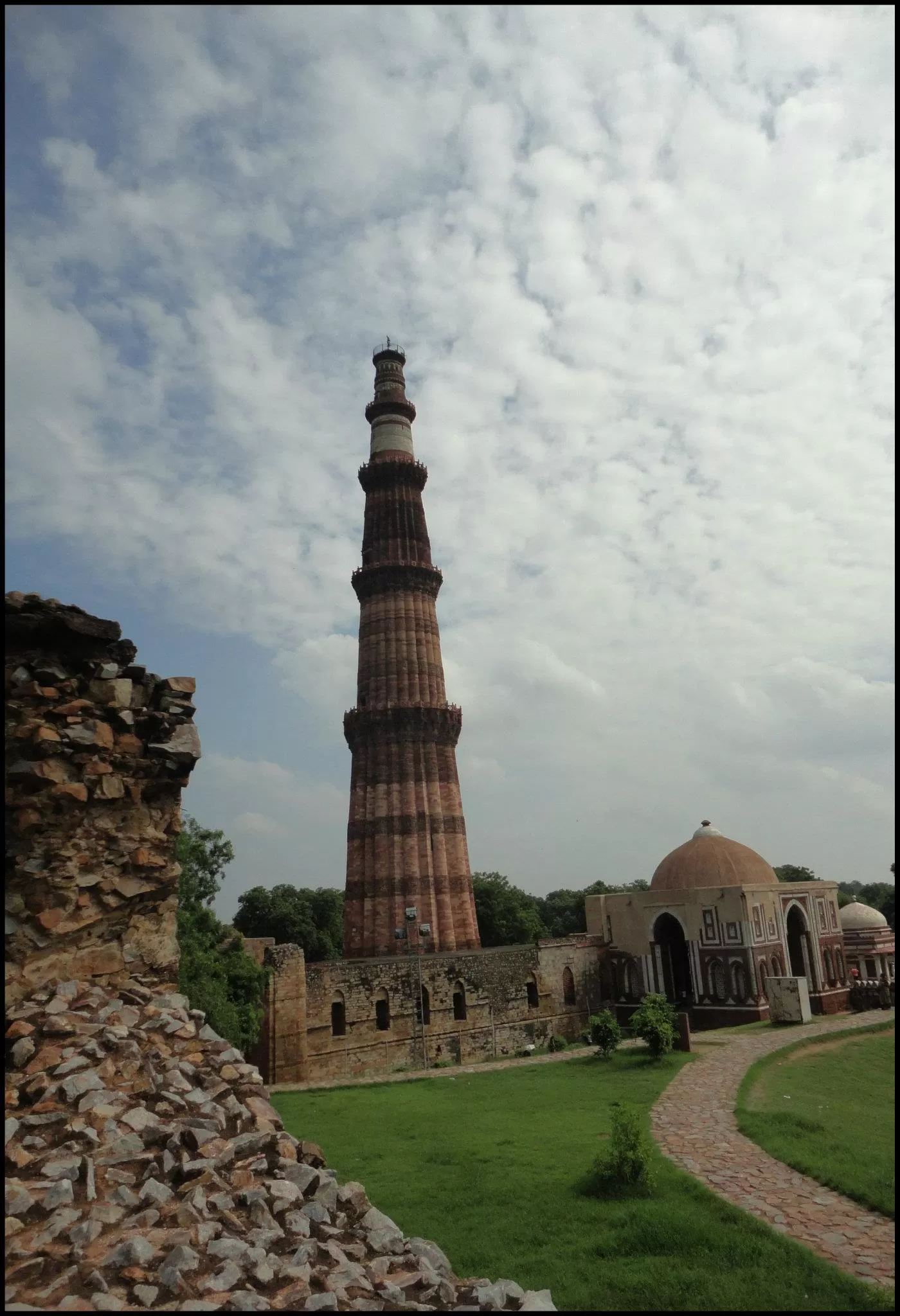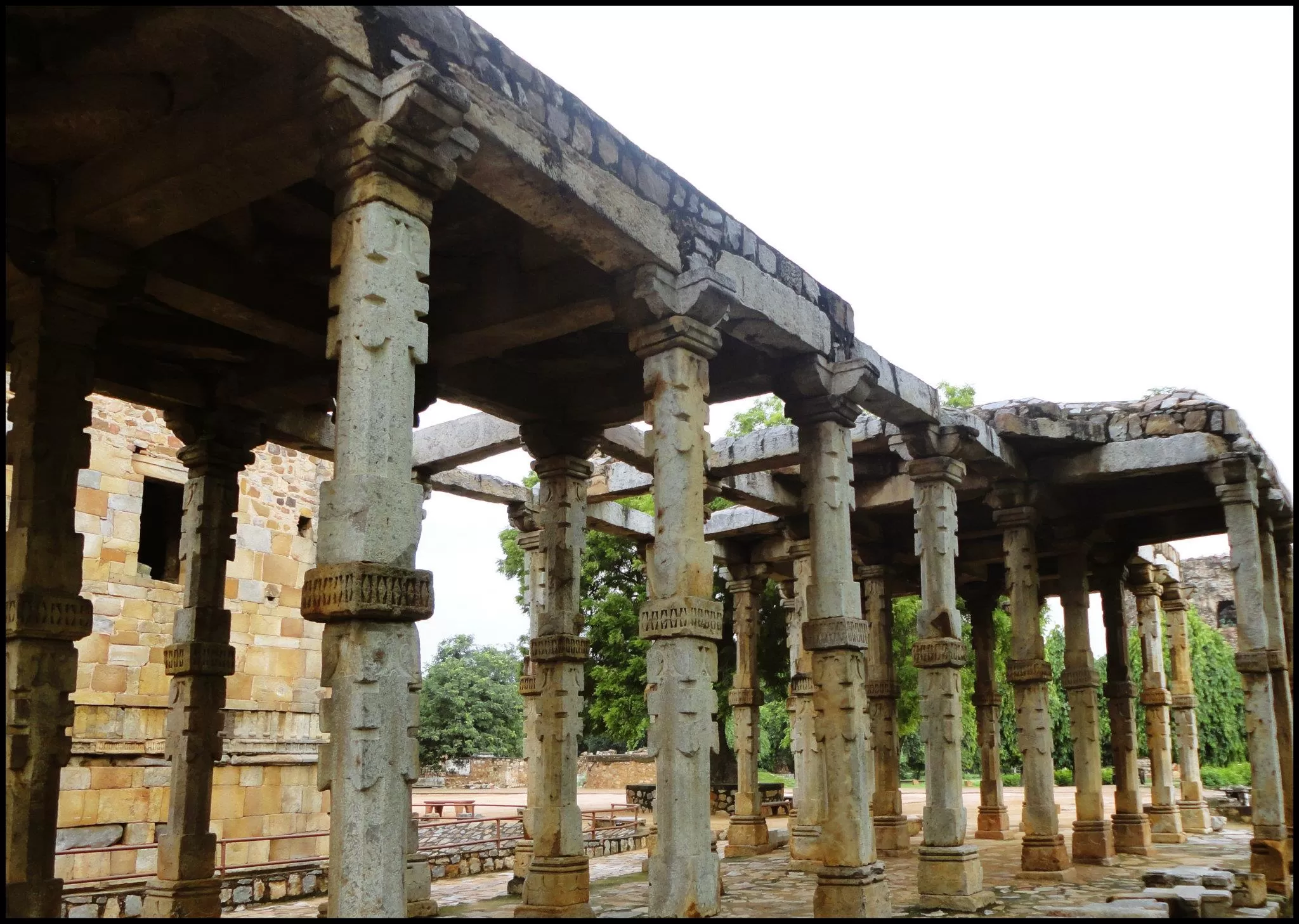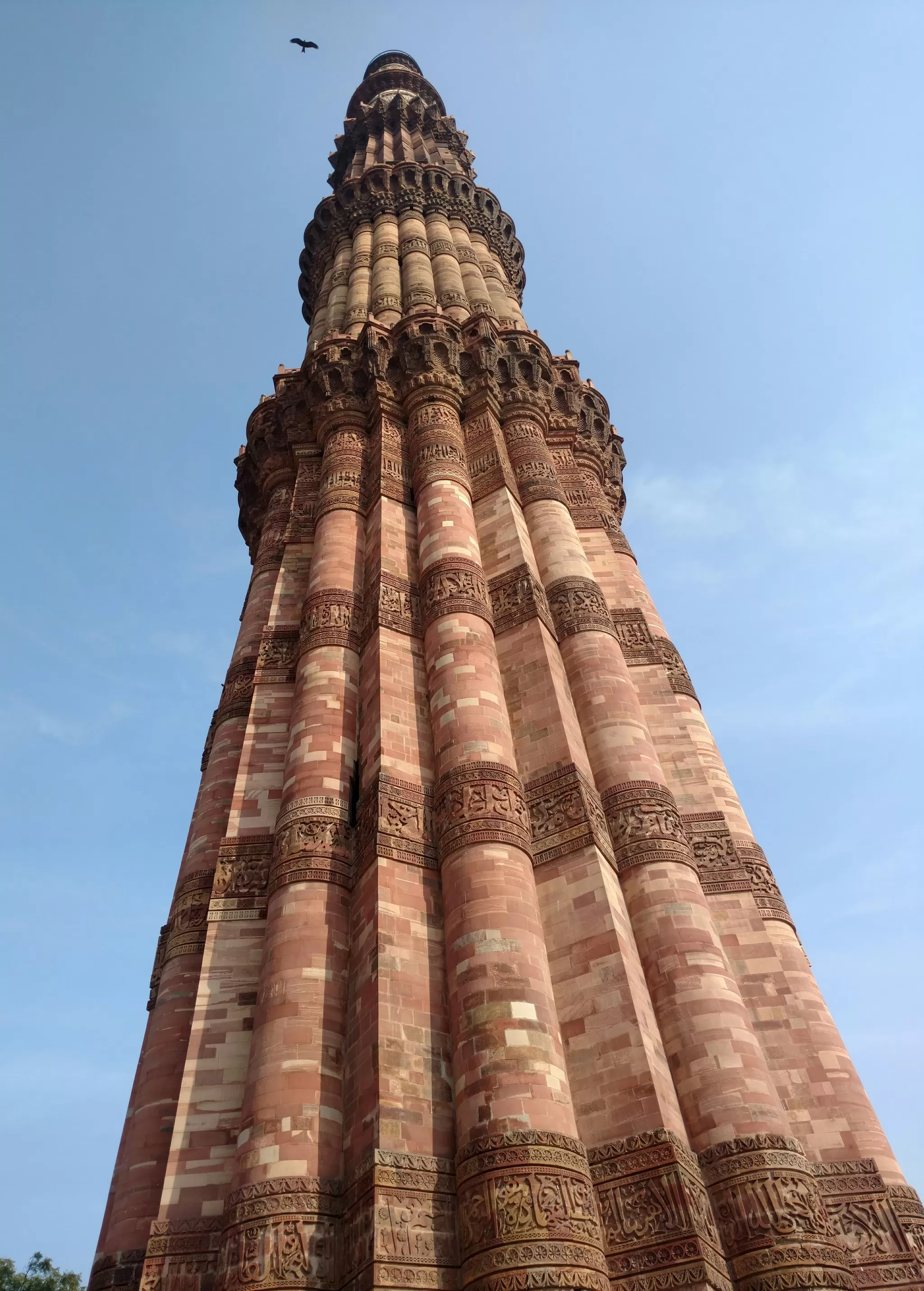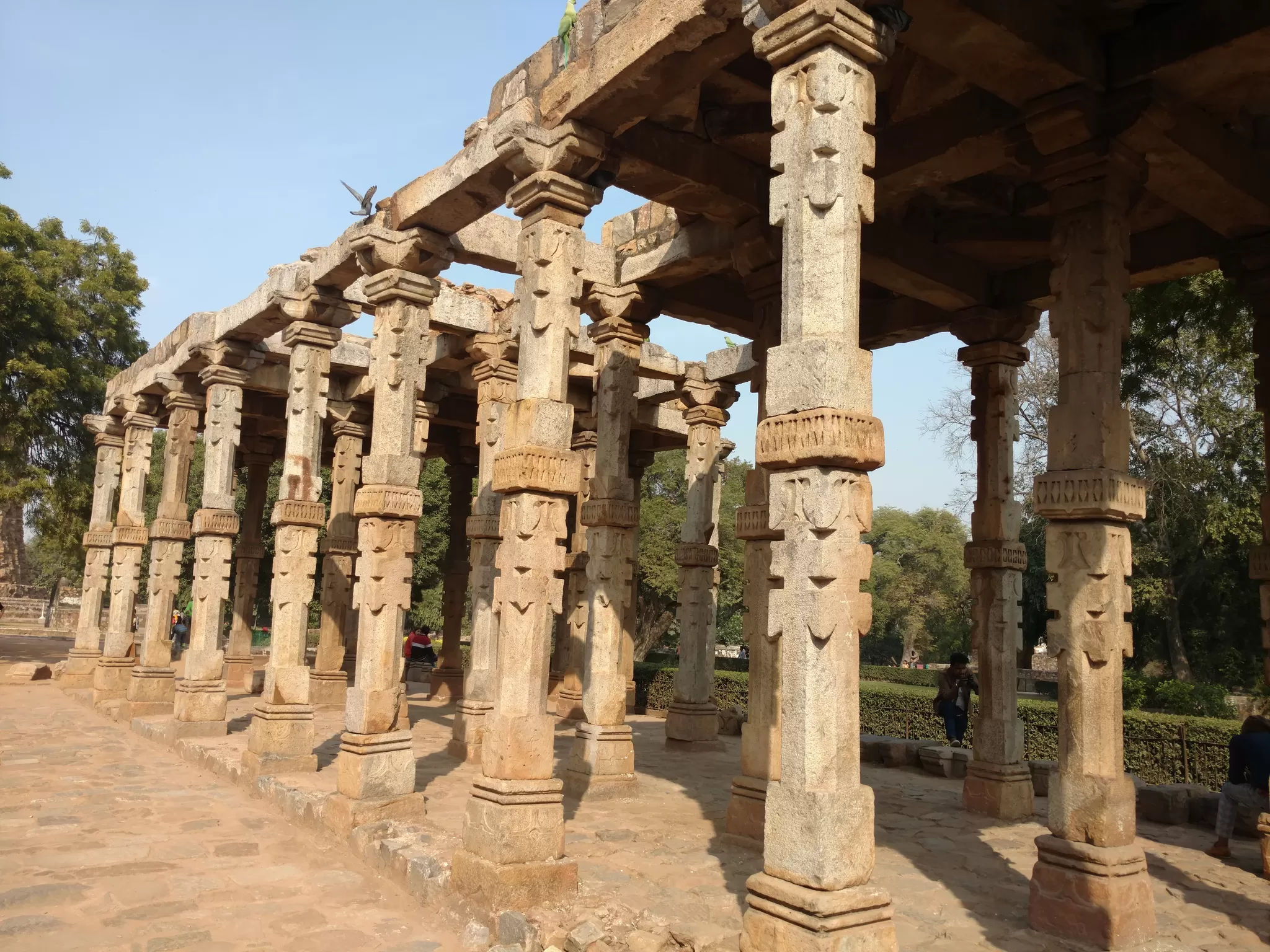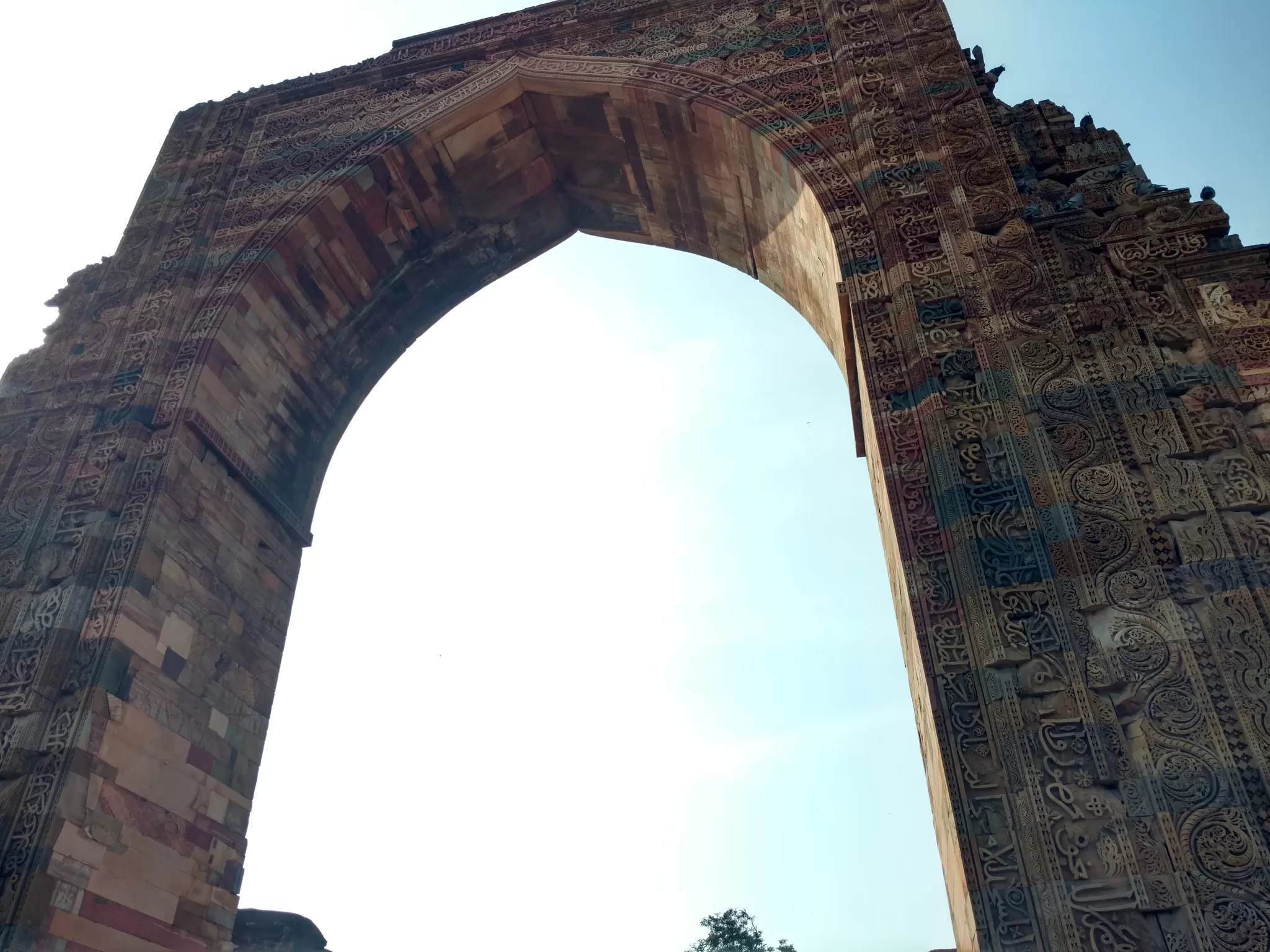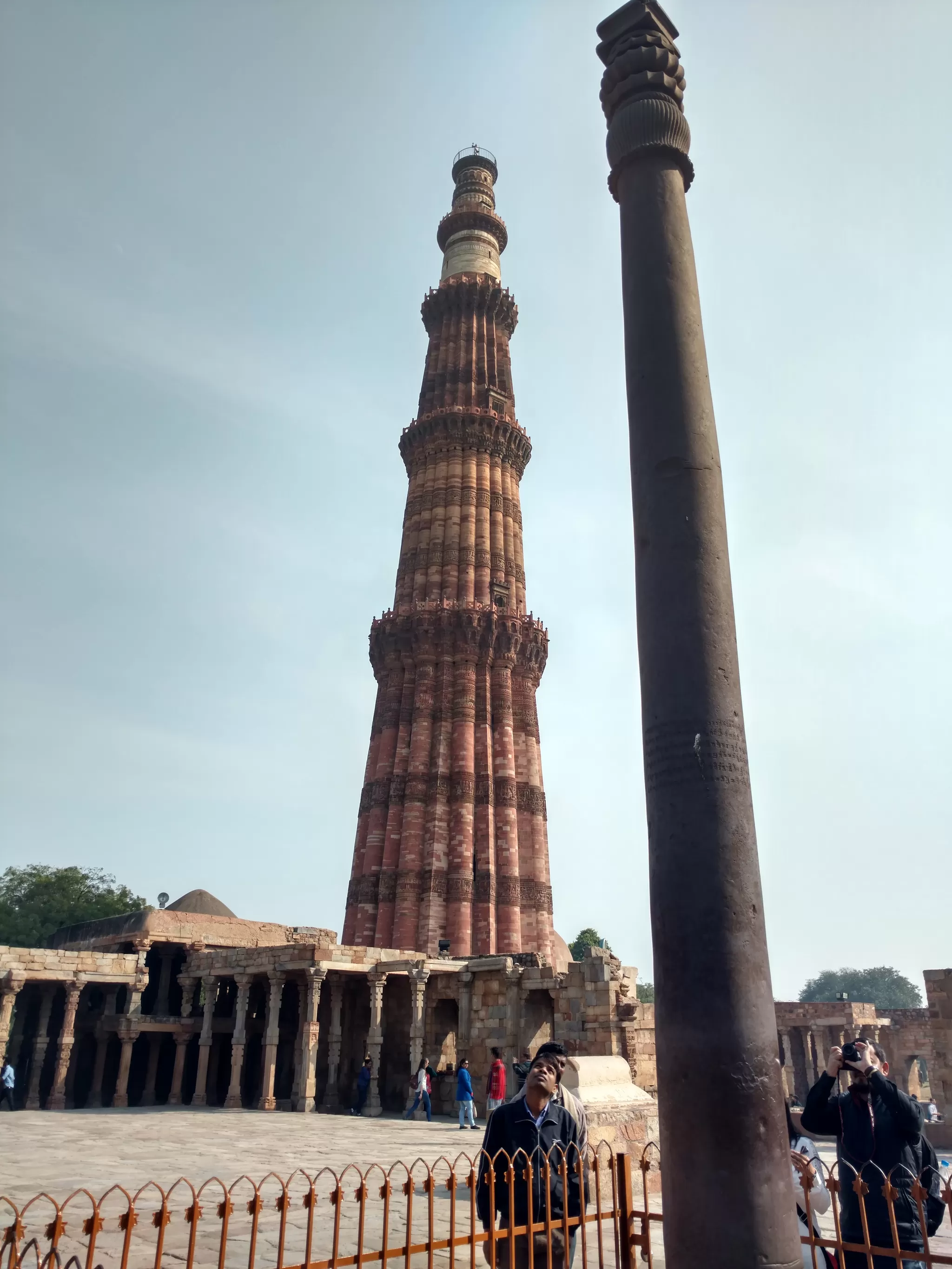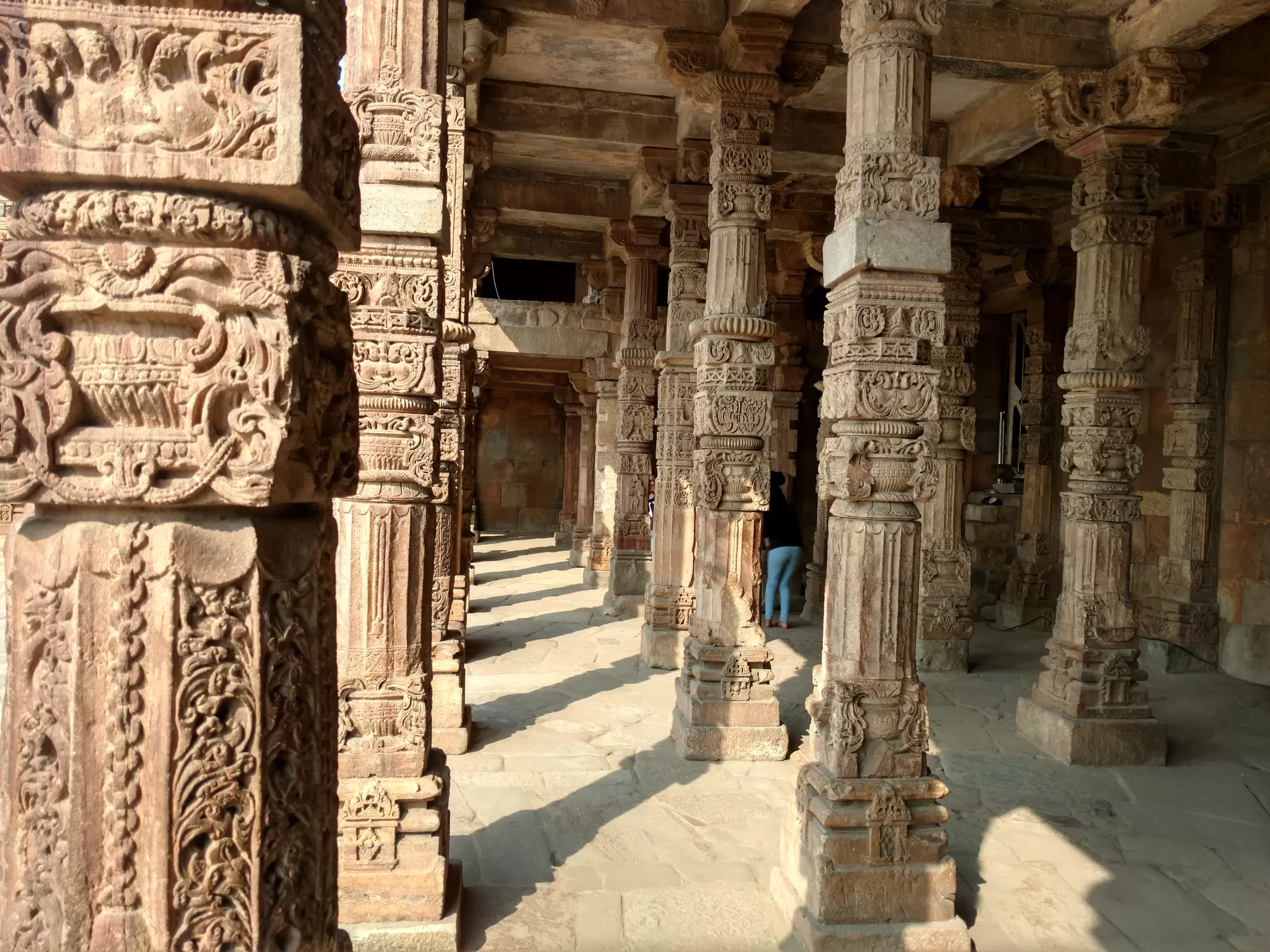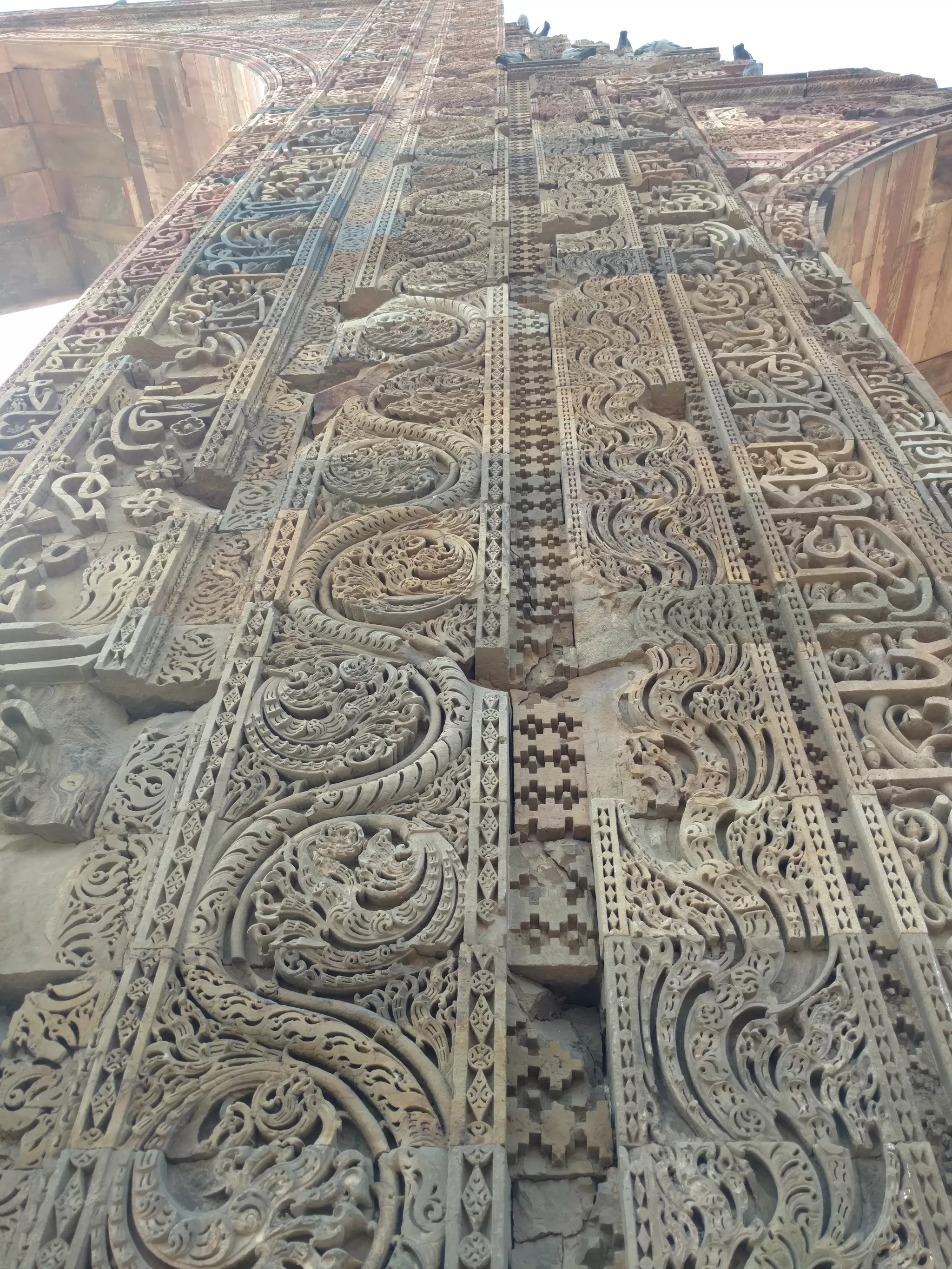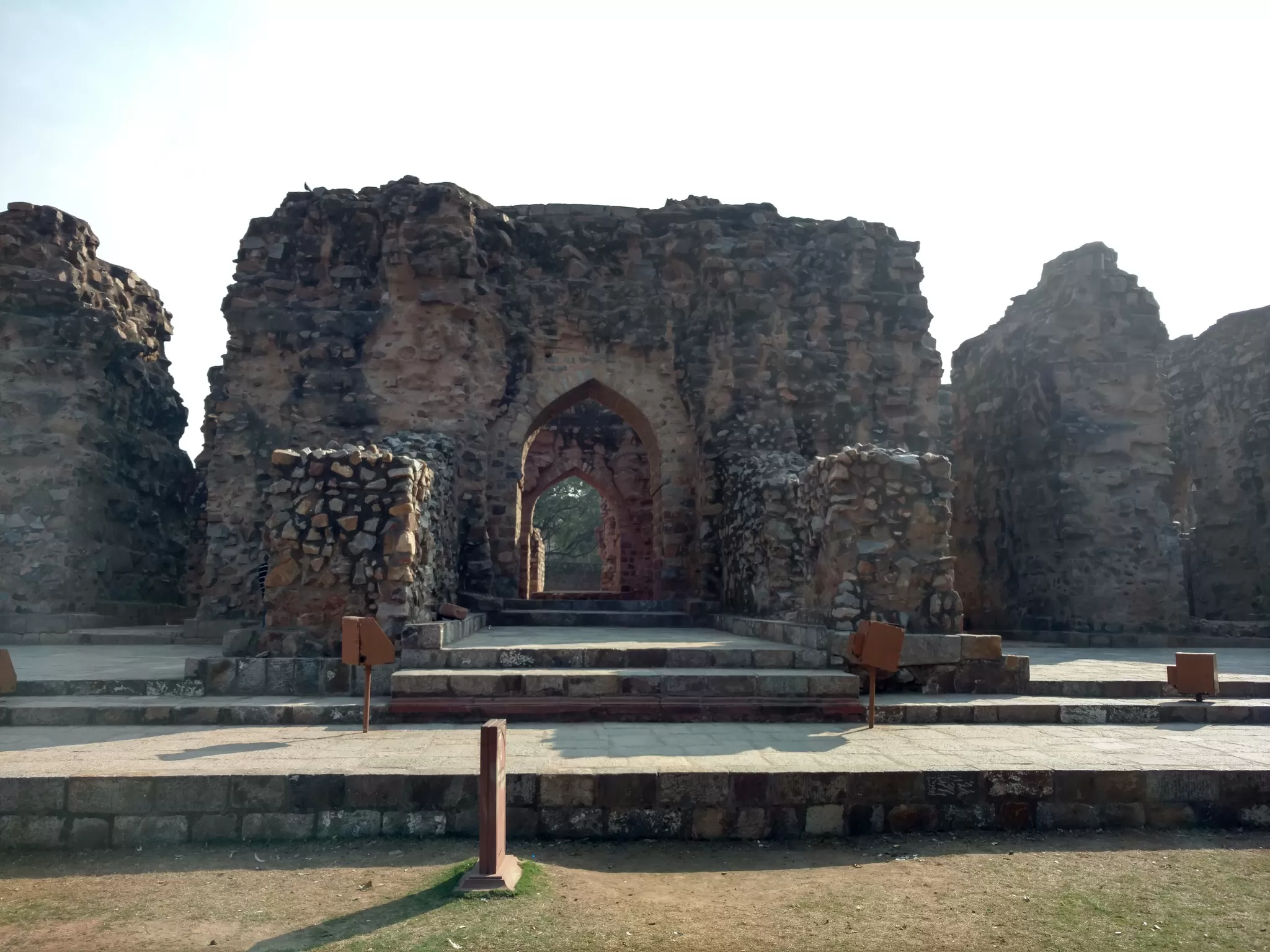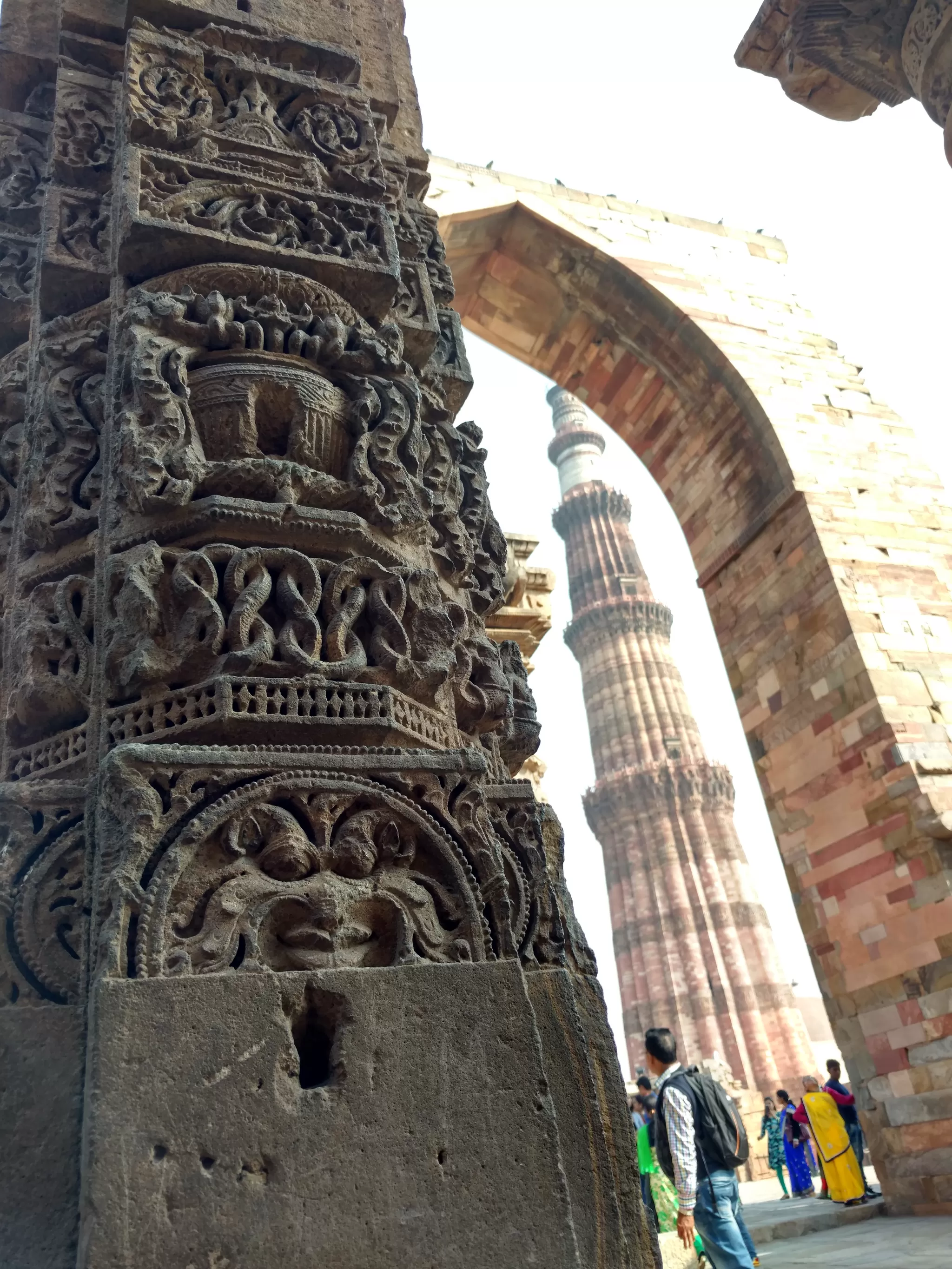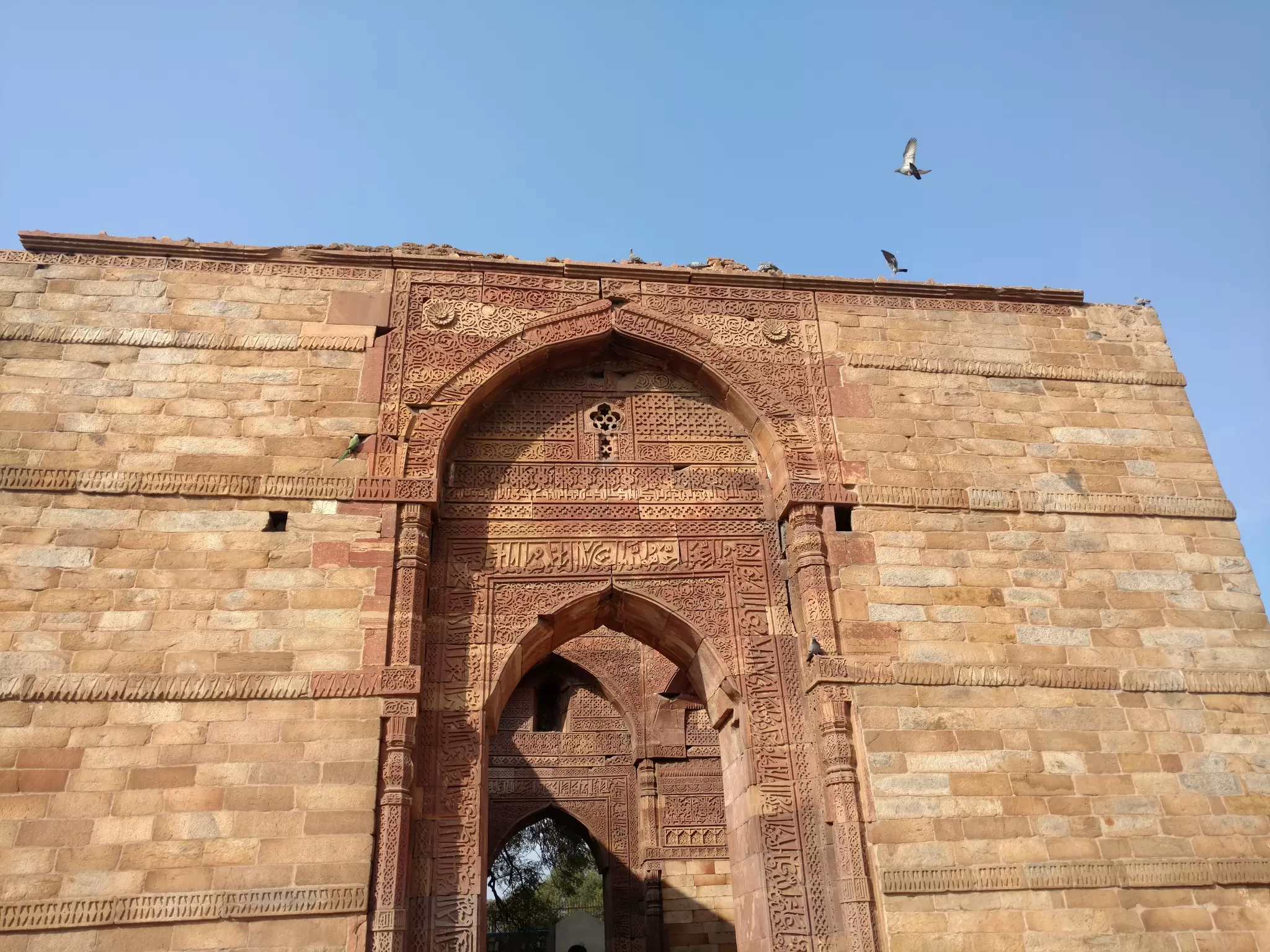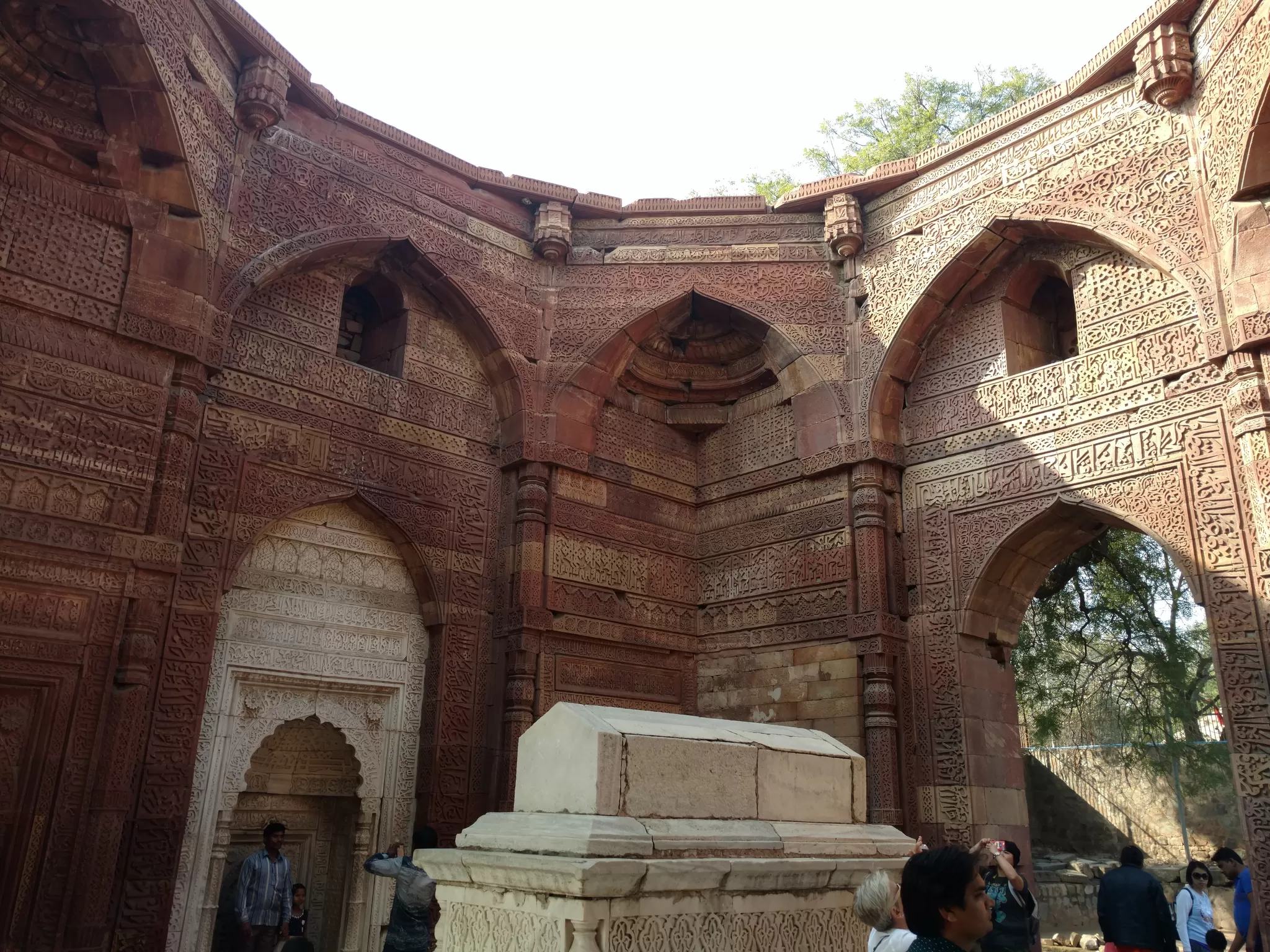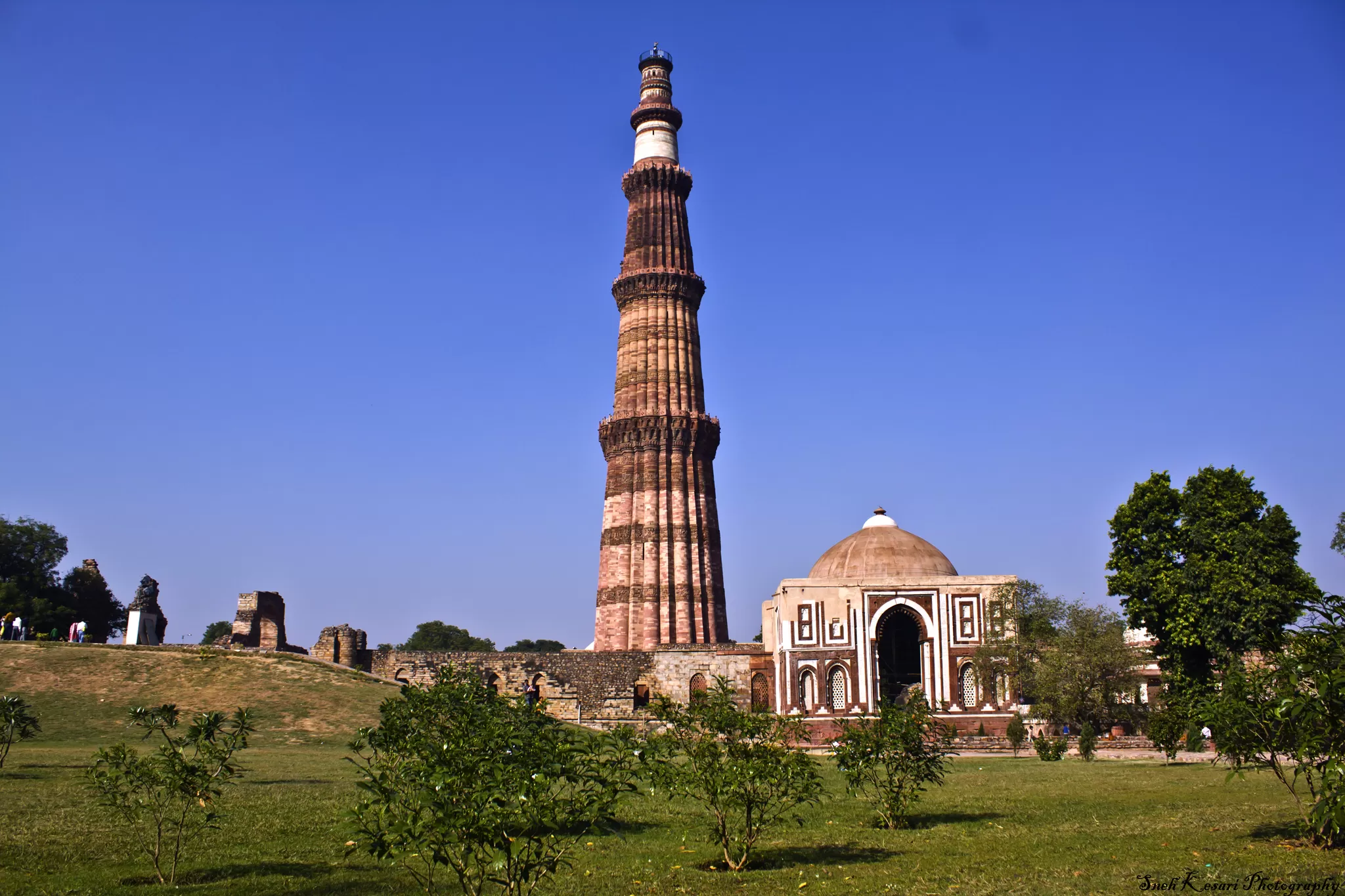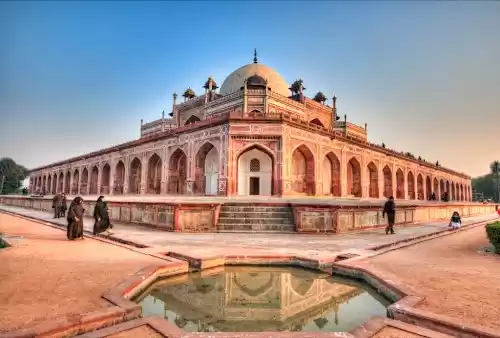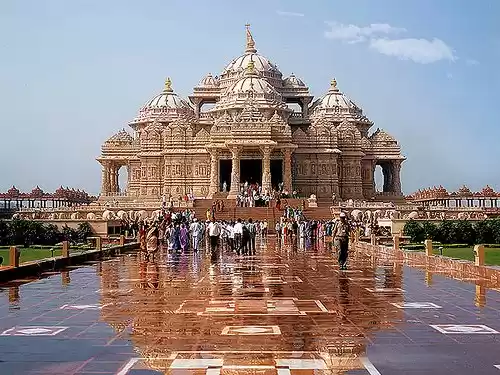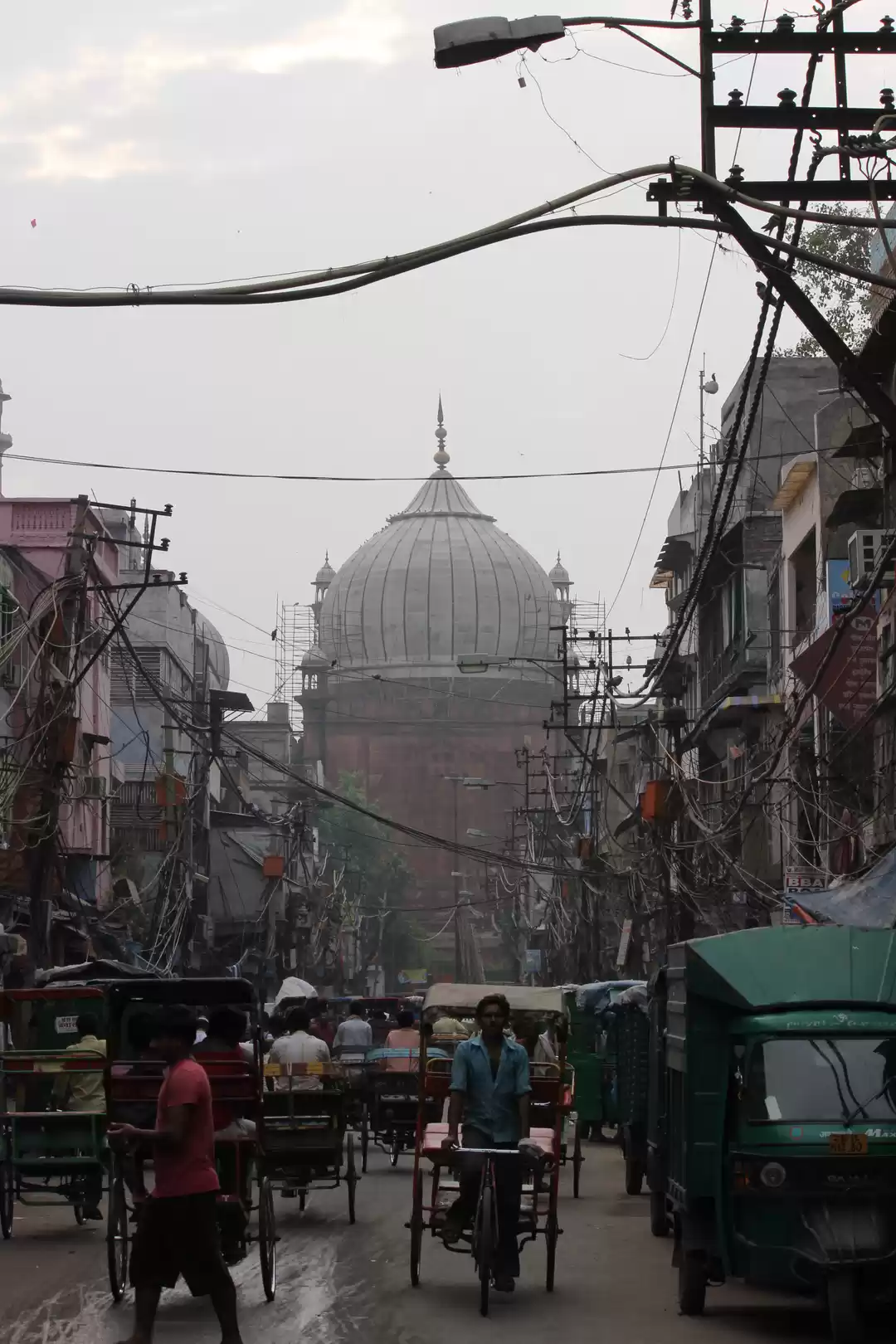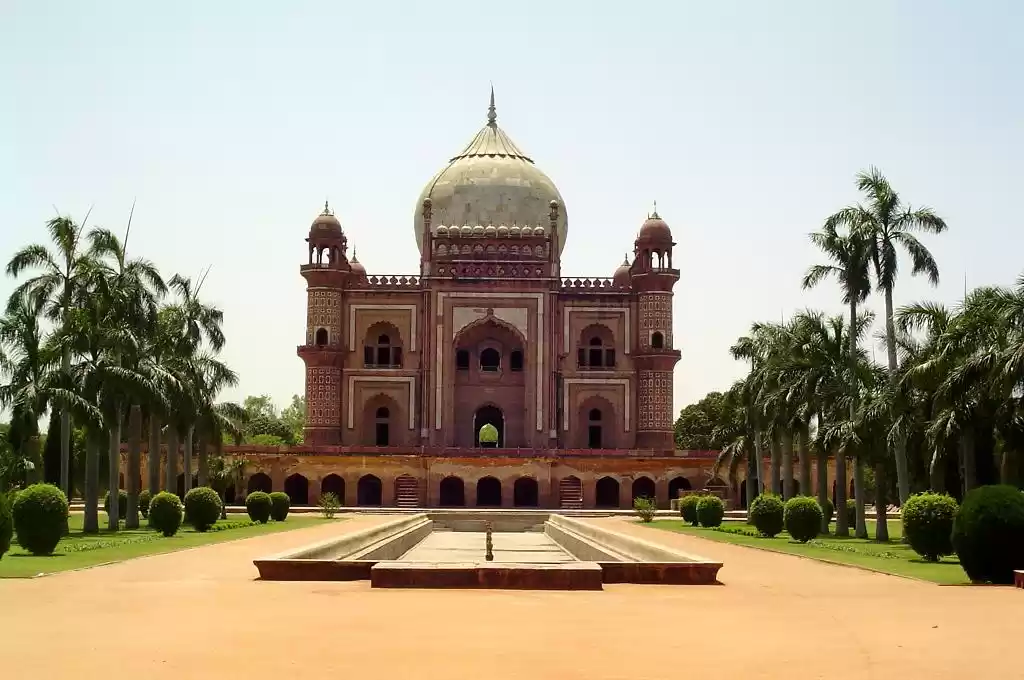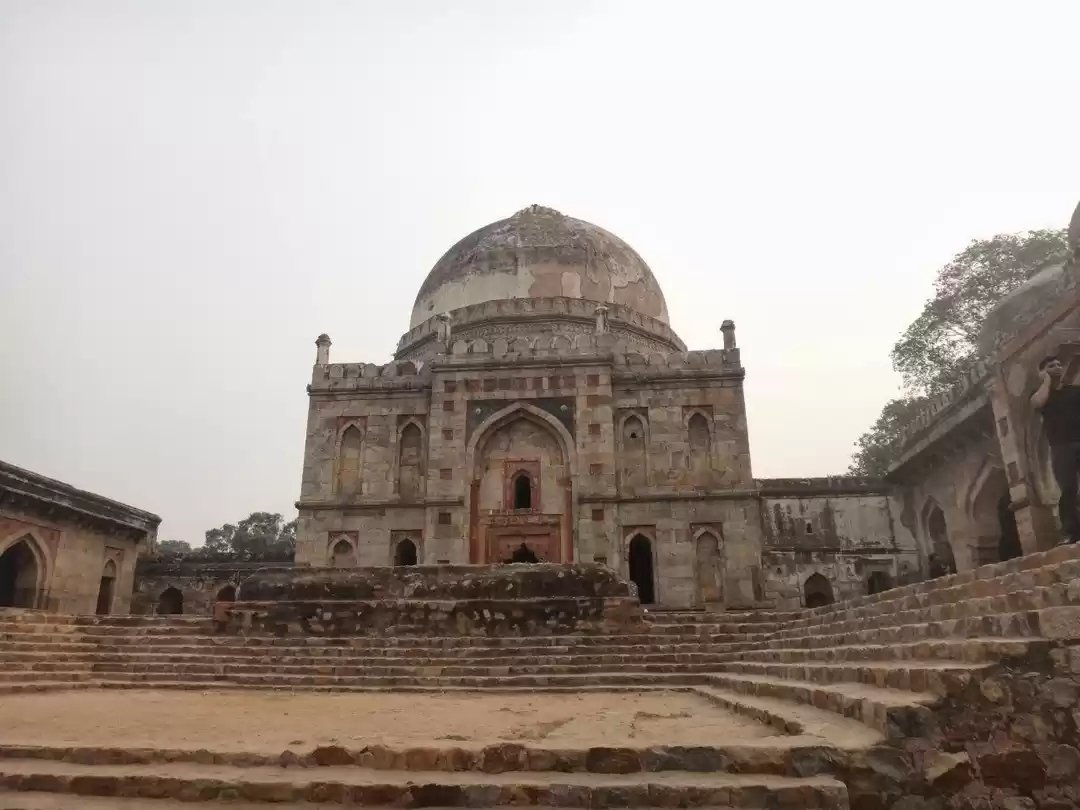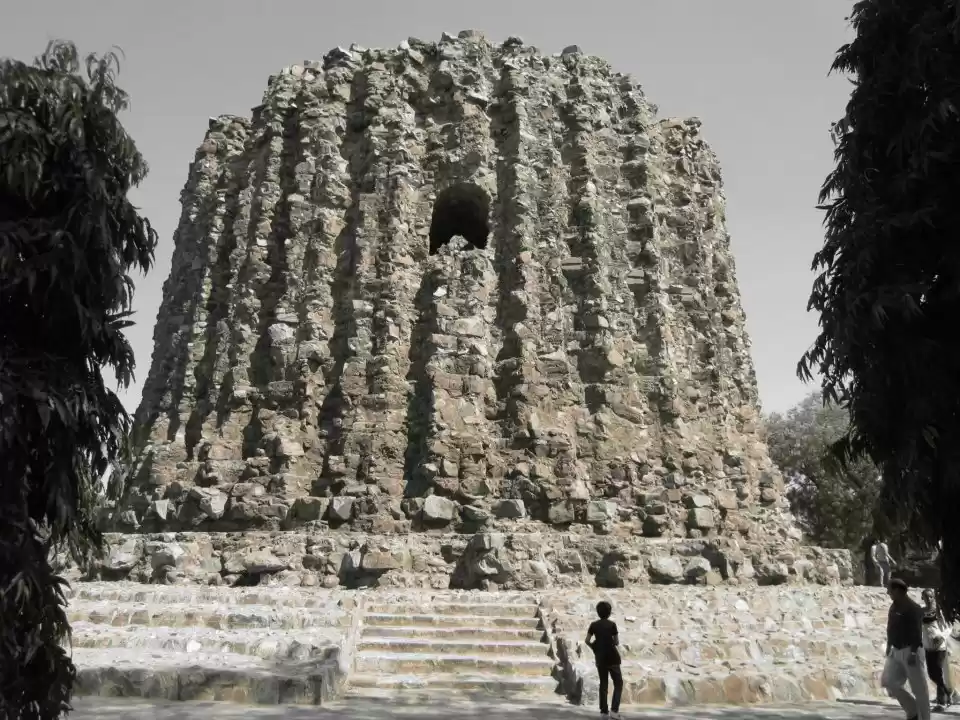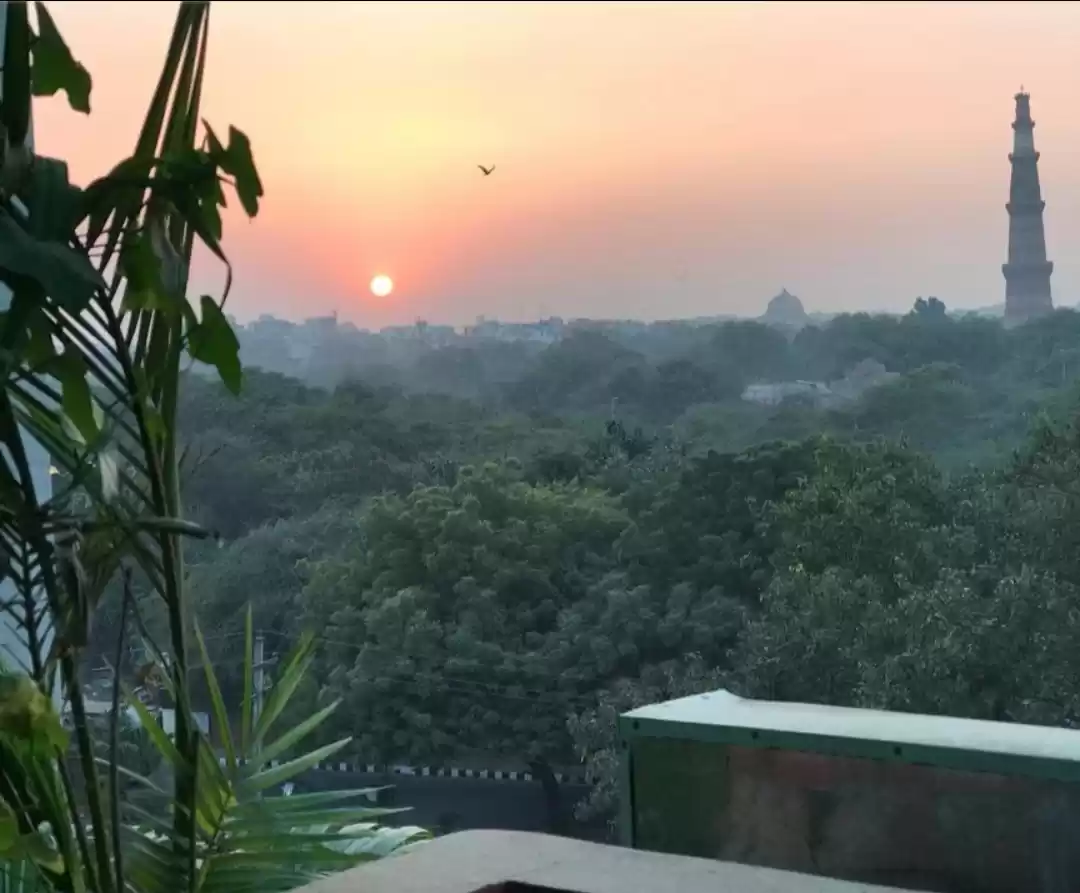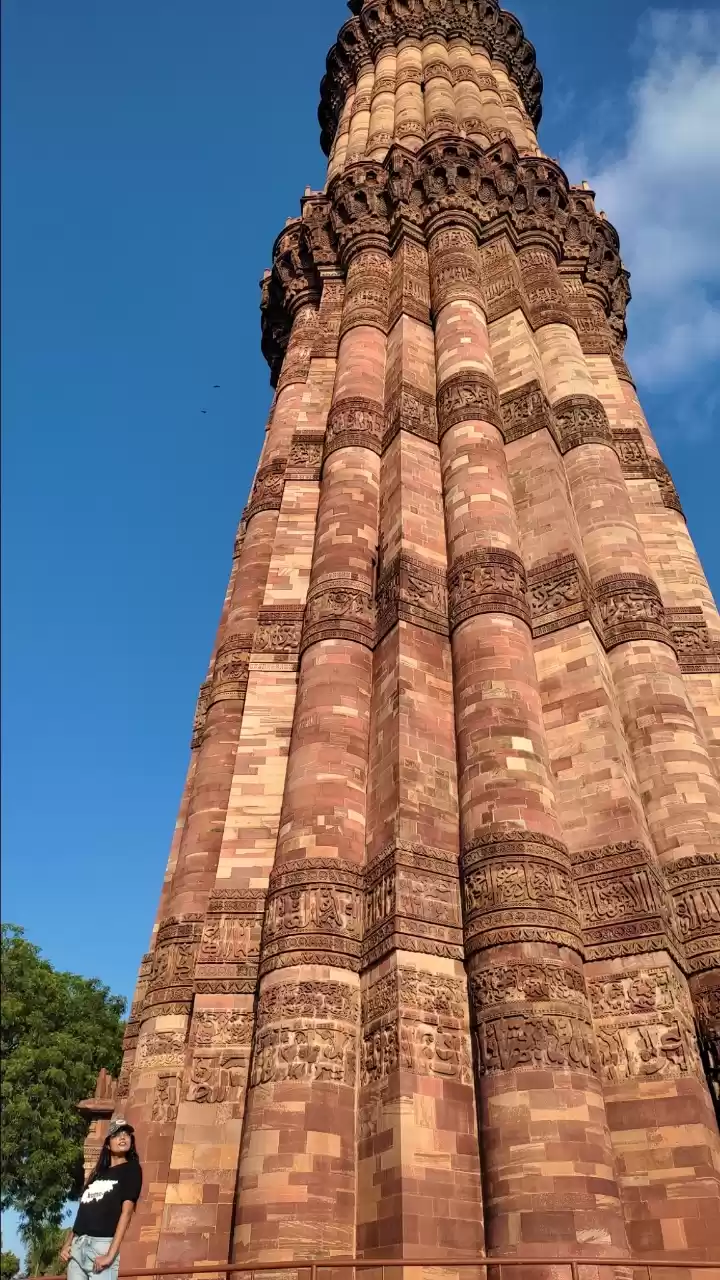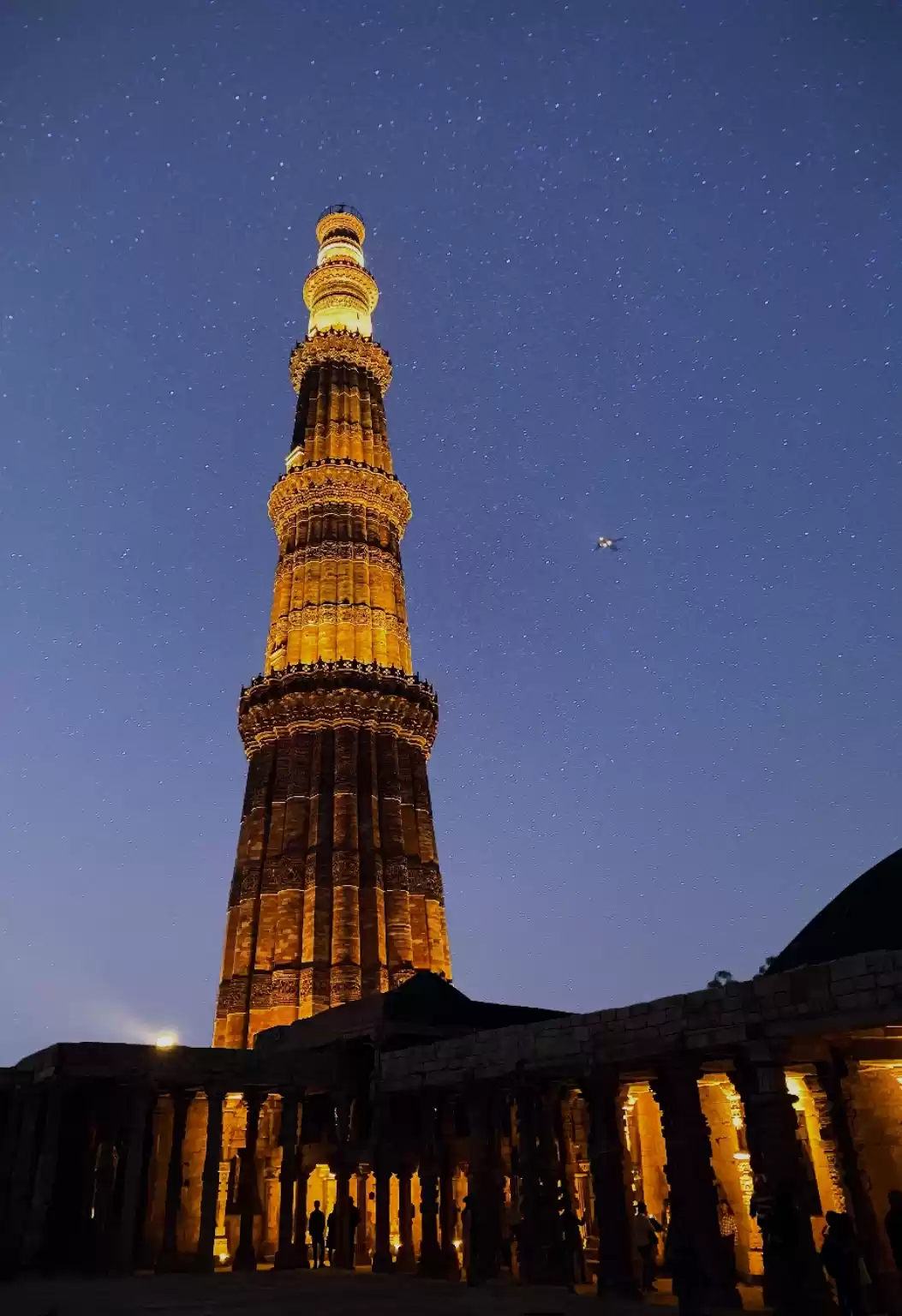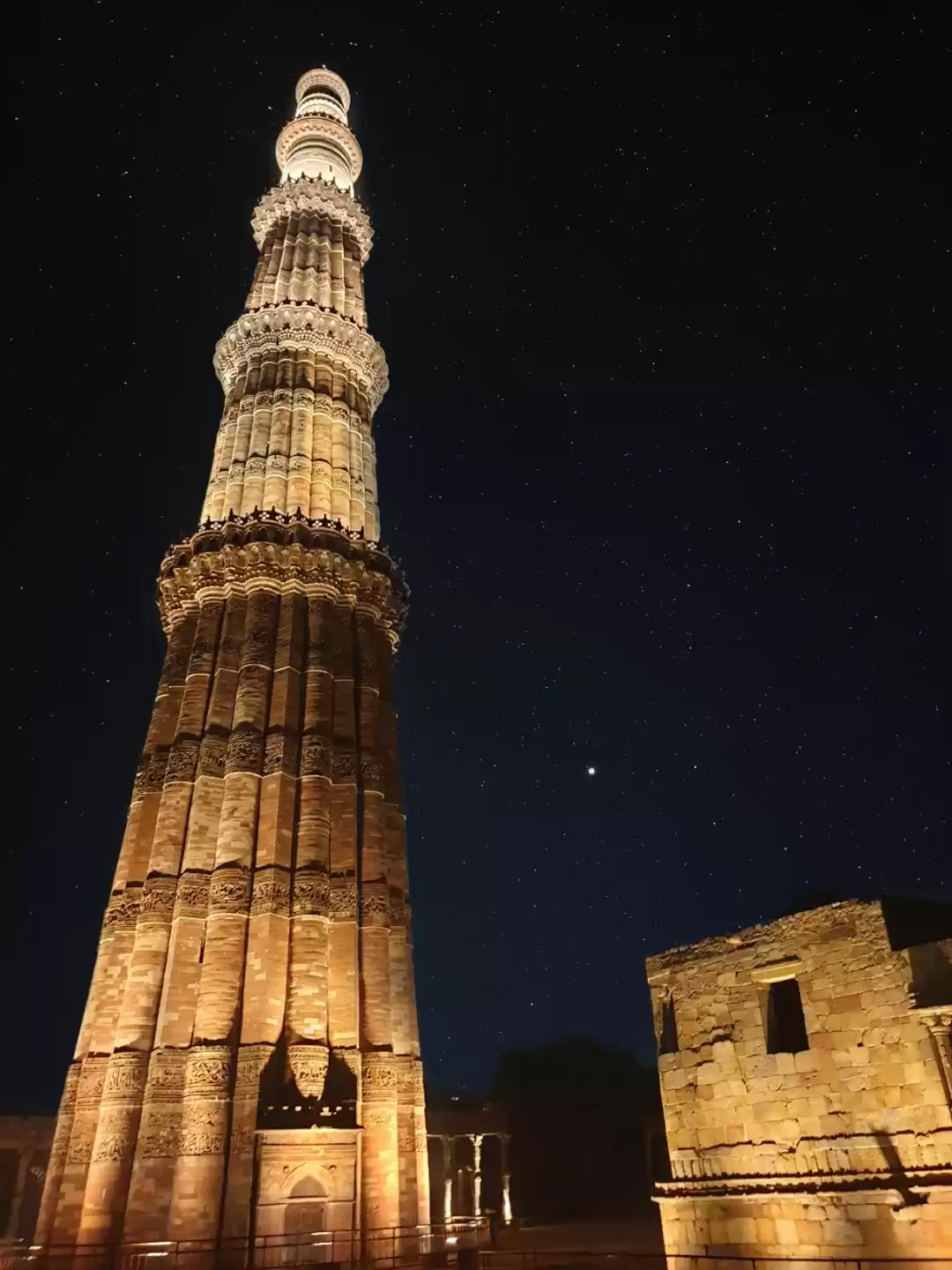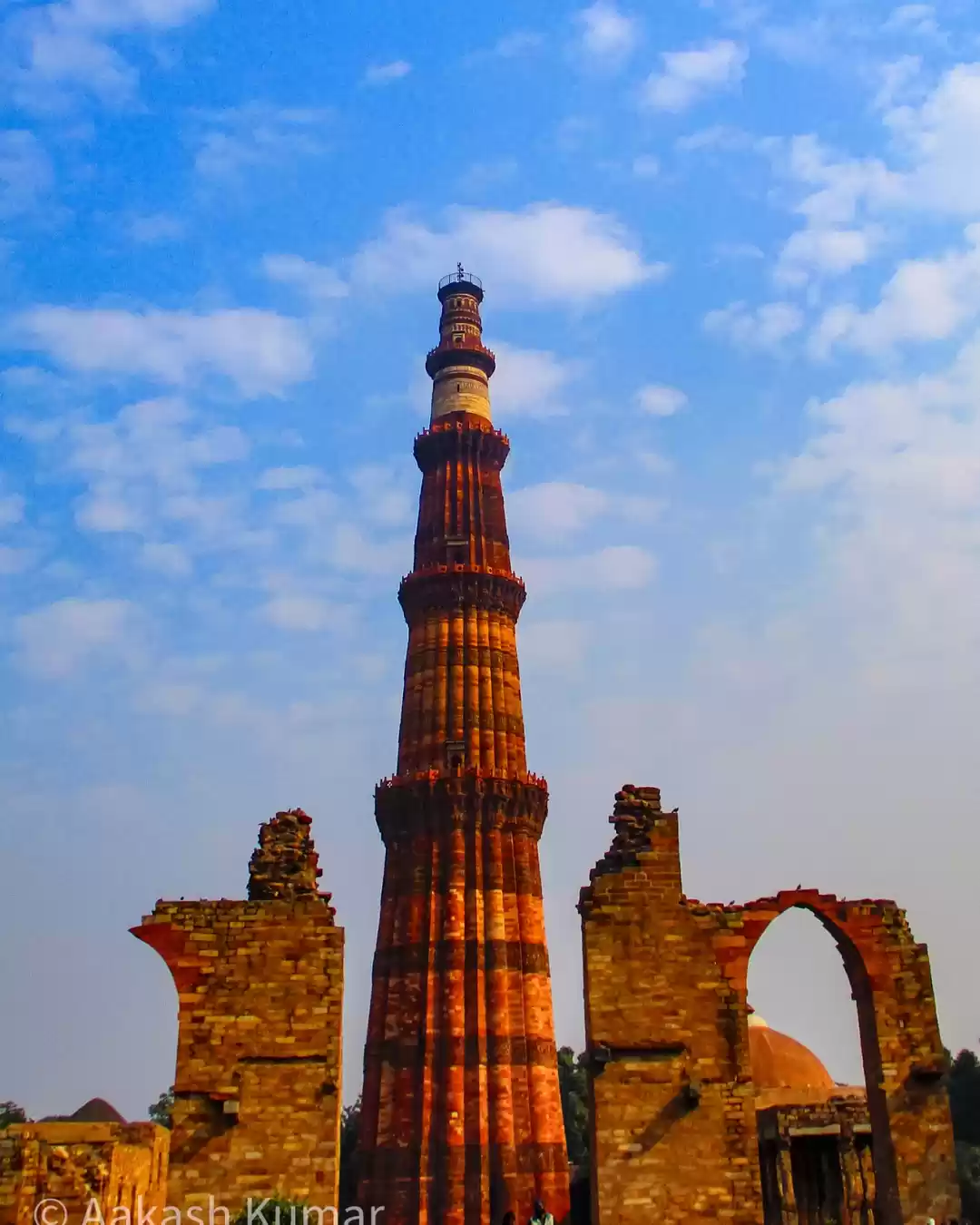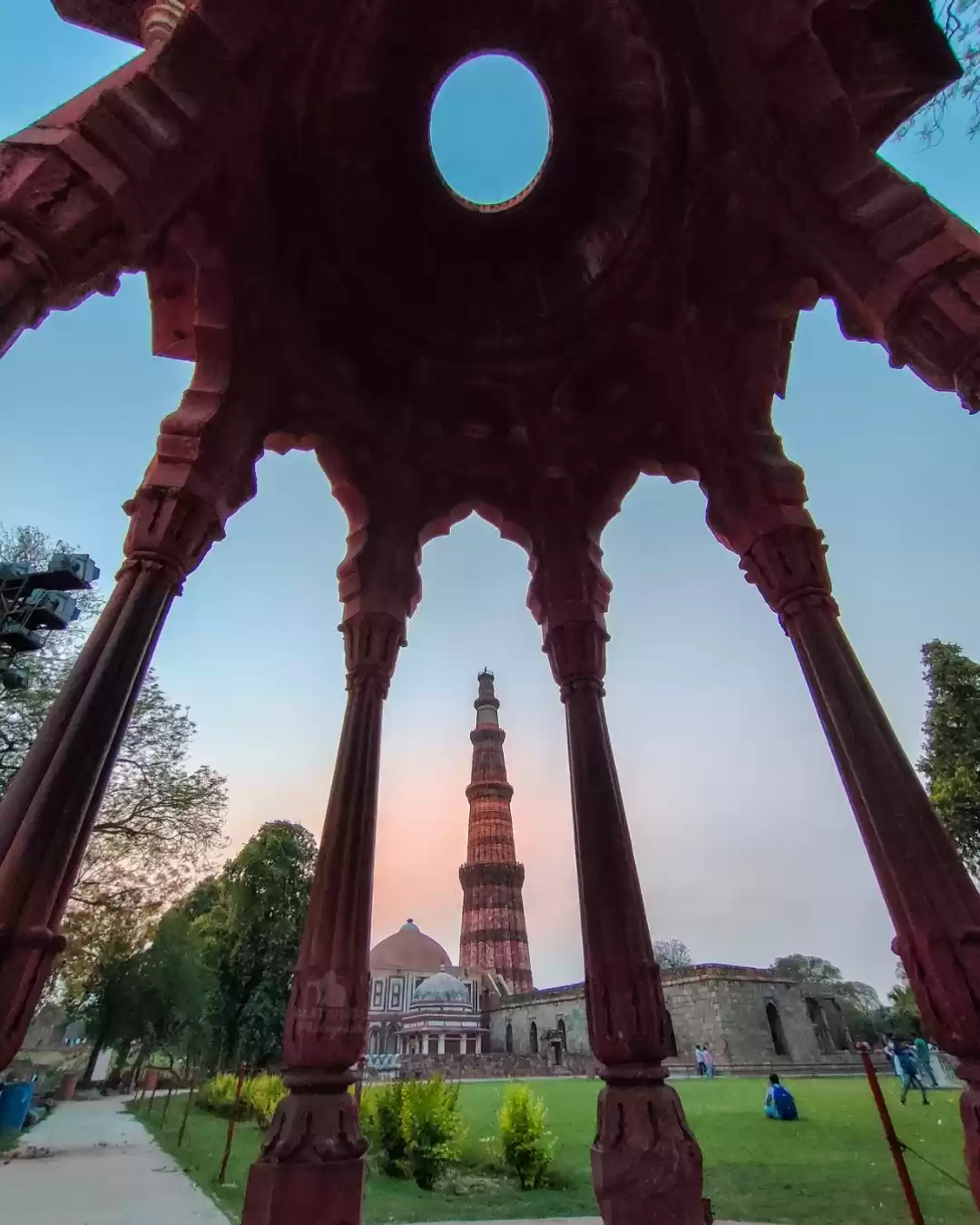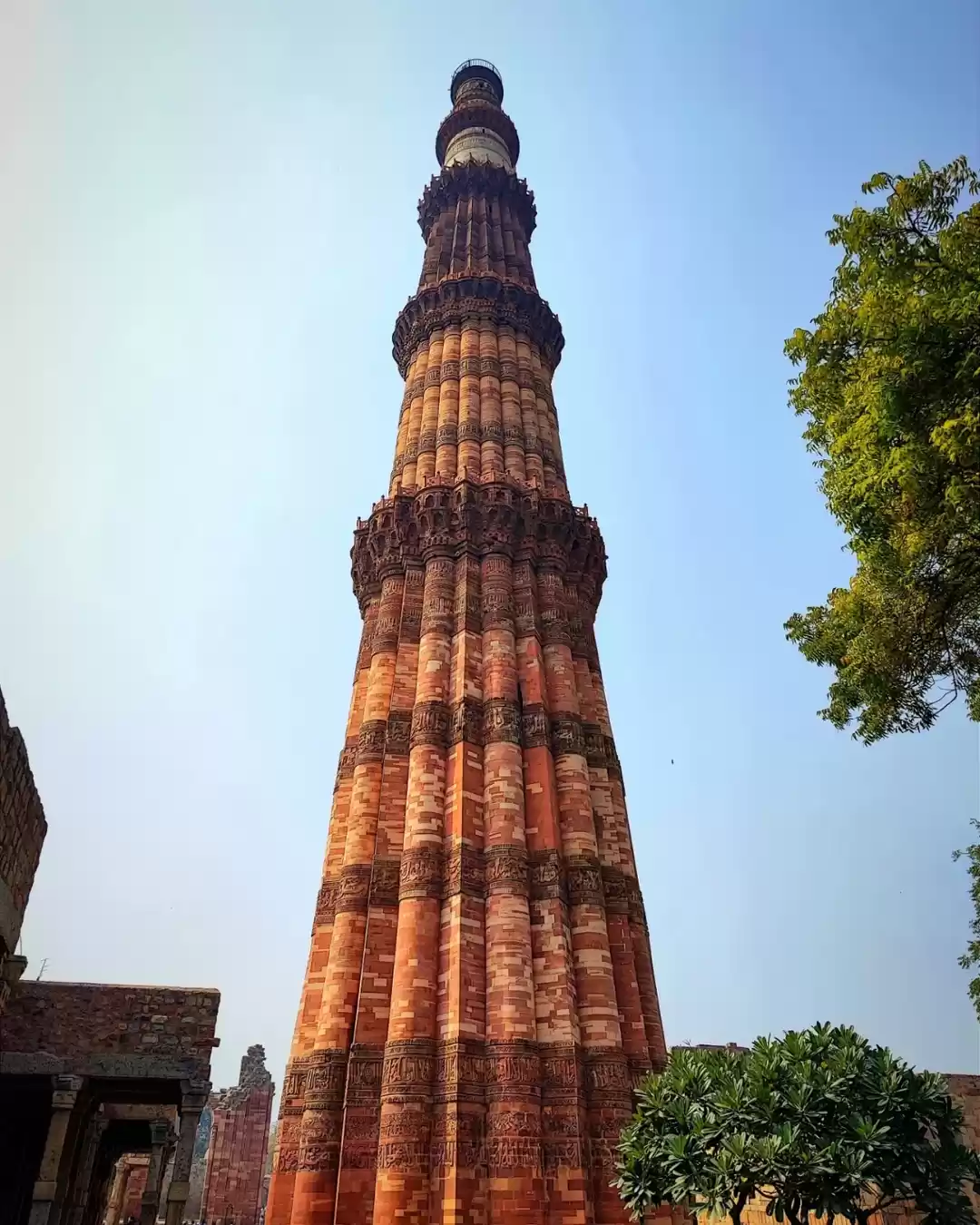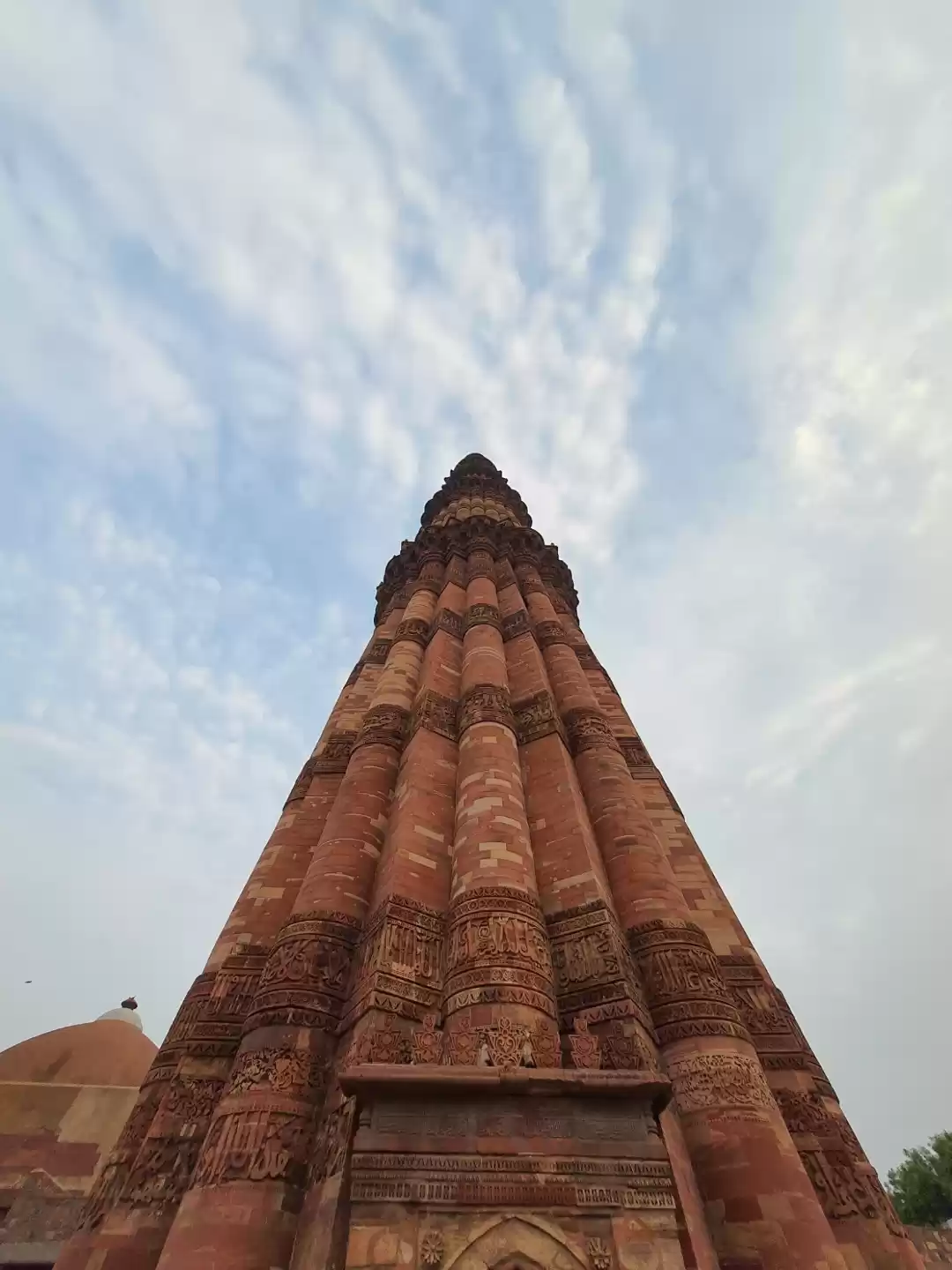Qutub Minar, a UNESCO World Heritage Site in Delhi, India, is the tallest brick minaret in the world, reaching 239 feet towards the sky. Qutub Minar is known for the Iron Pillar of Delhi, a 6-tonne iron pillar that stands within the complex.
The complex also houses the Quwwat-ul-Islam Mosque, the first mosque built in Delhi after the Islamic conquest, blending Islamic and Hindu architectural styles. The minaret is also known for its spiral staircase of 379 steps, leading to the topmost balcony, offering panoramic views of the surrounding area. Built-in the early 13th century, Qutub Minar is a symbol of the rich history and cultural heritage of India.
What is Qutub Minar?
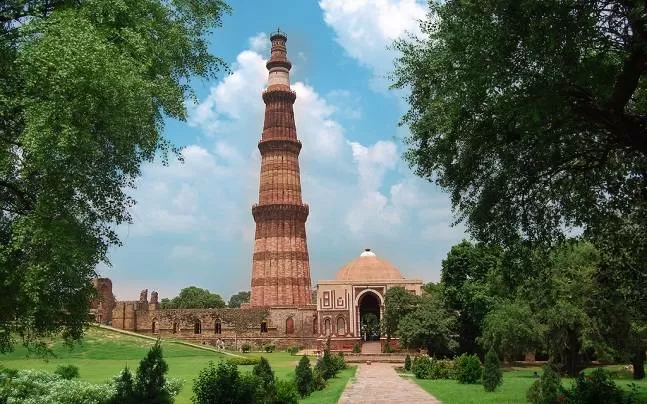
- Qutub Minar was constructed by Qutb-ud-din Aibak, the founder of the Delhi Sultanate, in 1199 CE, to commemorate his victory over the last Hindu kingdom in Delhi.
- The construction was continued by his successors Iltutmish and Firoz Shah Tughlaq, who added more storeys and balconies to it.
- The tower stands at a height of 72.5 meters (237 feet) with a base diameter of 14.3 meters (47 feet). It comprises five storeys and has 379 steps leading to the top. Various inscriptions in Arabic and Persian on the tower record its history and builders.
- Qutub Minar has witnessed numerous events and changes in Delhi's history. Legends and stories surround it, such as the belief that encircling the iron pillar in the complex with one's arms while standing with the back to it can make a wish come true.
- The tower has been a subject of theories and controversies. Some historians view it as a minaret for the nearby Quwwat-ul-Islam mosque, while others argue it was a victory tower or a sundial. Some suggest it was inspired by the Minaret of Jam in Afghanistan or the Tower of Pisa in Italy.
Entry Fees and Timings for Qutub Minar

Entry Fee:
- For Indian citizens and visitors from SAARC countries: ₹40 per person.
- For foreign nationals: ₹600 per person.
- Children up to 15 years of age have free entry.
Timings:
- Qutub Minar is open for visitors from Tuesday to Sunday.
- The timings are from 7:00 AM to 5:00 PM.
Must-See Attractions In Qutub Minar

The Qutub complex is a sprawling area that houses many historical and cultural monuments.
Quwwat-ul-Islam mosque: This is one of the oldest and largest mosques in India, built by Qutb-ud-din Aibak in 1193 CE.The mosque has a large courtyard, a prayer hall, and several columns and arches that display Hindu and Islamic motifs.
Alai Darwaza:This is a magnificent gateway that was built by Alauddin Khilji in 1311 CE. It marks the entrance to the Qutub complex and showcases the Turkish style of architecture. It has a domed roof, a pointed arch, and intricate carvings and inscriptions.
Iron Pillar of Chandragupta II: This 7-meter-high pillar stands testament to the skill of ancient Indian blacksmiths due to its resistance to corrosion. The pillar bears an inscription stating it was erected in honor of the Hindu god, Vishnu, and in the memory of the Gupta King Chandragupta II (375–415 CE)
Alai Minar: This is an unfinished tower that was intended to be twice as high as Qutub Minar. It was started by Alauddin Khilji in 1311 CE but was abandoned after his death in 1316 CE. Only the base of the tower remains, which is 24.5 meters (80 feet) in diameter.
Tomb of Adham Khan: This is a octagonal tomb that was built by Akbar, a Mughal emperor, in 1561 CE. It is dedicated to Adham Khan, a general and a foster brother of Akbar, who was killed by him for murdering another general.
Tomb of Iltutmish: Built in 1235, this is the final resting place of Shams-ud-din Iltutmish, the third ruler of the Delhi Sultanate. The tomb is known for its intricate carvings and inscriptions.
Tomb of Imam Zamin: Adjacent to the Alai Darwaza, this sandstone tomb houses the remains of Imam Muhammad Ali, also known as Imam Zamin, a cleric from Turkestan who settled in India during the 14th century.
Madrasa and Alauddin Khilji’s tomb: The madrasa, an Islamic seminary, was built by Khilji alongside his tomb. It reflects the educational and cultural aspects of the site and offers insight into the Islamic education system of the time.
Must Read: Enjoy Delhi with these best things to do in Delhi
Architecture of Qutub Minar
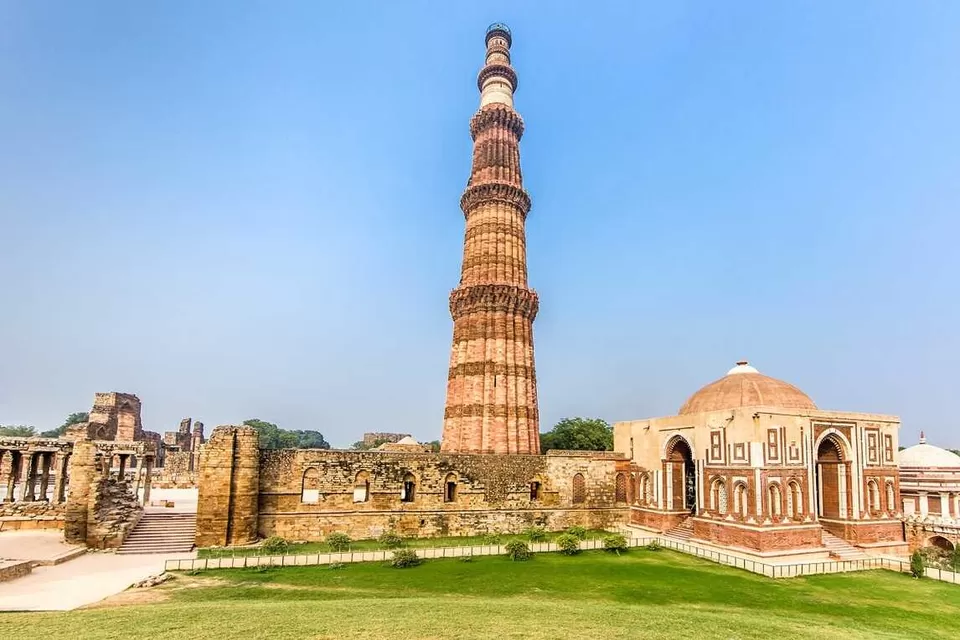
- Qutub Minar features a tapering cylindrical shape made of red sandstone and marble, showcasing different architectural styles on each storey.
- The first three storeys exhibit Islamic influence with fluted columns and pointed arches, while the fourth and fifth storeys reflect Hindu influence with plain walls and circular motifs.
- The architecture of Qutub Minar demonstrates the artistic and technical skills of its builders and craftsmen, featuring intricate carvings depicting floral designs, geometric shapes, and Quranic verses.
- While Qutub Minar's architecture is unique and impressive, it is not the only tower of its kind. Other notable towers include:
Eiffel Tower: A wrought iron lattice tower in Paris, France, built by Gustave Eiffel for the 1889 World's Fair. It stands 324 meters (1,063 feet) high and is a symbol of romance.
Leaning Tower of Pisa: A freestanding bell tower in Pisa, Italy, built between the 12th and 14th centuries. It stands 55.86 meters (183.27 feet) high and is known for its 3.97-degree tilt caused by an unstable foundation.
Burj Khalifa: A skyscraper in Dubai, United Arab Emirates, built by Emaar Properties in 2010. It stands 828 meters (2,717 feet) high with 163 floors, making it the tallest building in the world and a symbol of innovation.
Best Places To Stay Near Qutub Minar
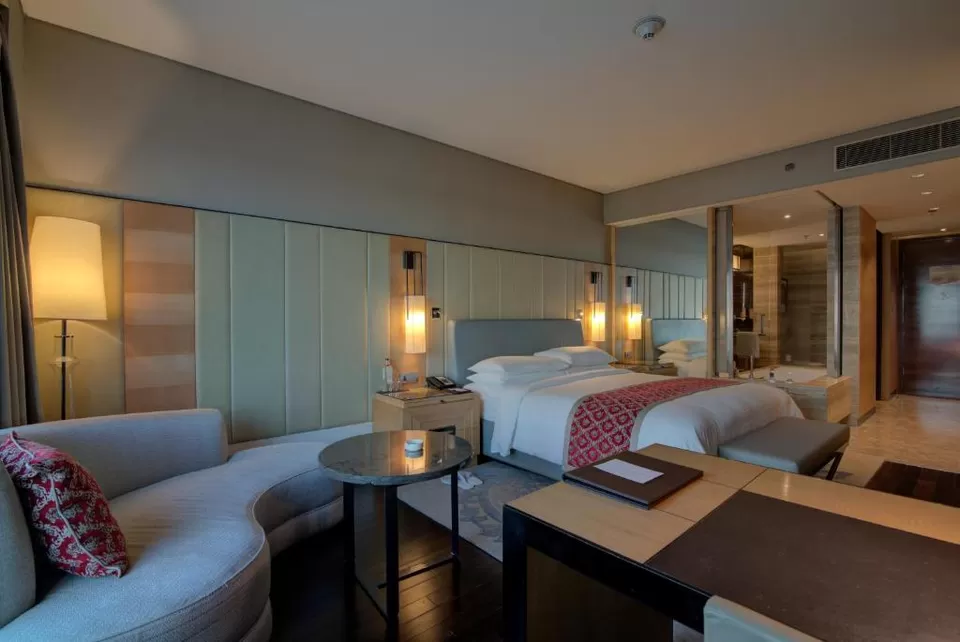
Sheraton New Delhi Hotel: This is a 5-star hotel located 7.9 km from Qutub Minar. It offers spacious and elegant rooms with modern amenities and city views. It also has a fitness center, a spa, an outdoor pool, and three restaurants.
JW Marriott Hotel New Delhi Aerocity: This is another 5-star hotel located 8.5 km from Qutub Minar. It offers luxurious and stylish rooms with air conditioning, minibars, and flat-screen TVs. It also has a 24-hour fitness center, a spa, an outdoor pool, and six dining options.
Udman Hotels and Resorts by Ferns N Petals: This is a 4-star resort located 7 km from Qutub Minar. It offers cozy and comfortable rooms with garden views and free wifi. It also has a banquet hall, a terrace, a lawn, and a restaurant.
Places To Visit After Qutub Minar
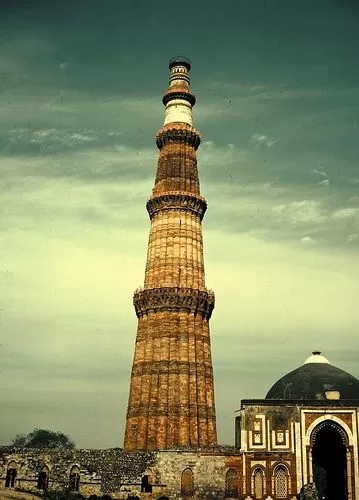
National Museum, New Delhi: The National Museum in New Delhi is one of India’s largest museums. The museum’s key holdings include the Dancing Girl sculpture, a carved ivory tusk depicting Buddha’s life stories, and a significant jade collection.
Lotus Temple: The Lotus Temple, also known as the Bahá’í House of Worship, is notable for its flowerlike shape and has won numerous architectural awards. Opened to the public in December 1986, it is constructed of 27 free-standing marble-clad “petals” arranged in clusters to form nine sides.
Humayun’s Tomb: Humayun’s Tomb in Delhi is the tomb of the Mughal Emperor Humayun and was the first garden-tomb on the Indian subcontinent and inspired several major architectural innovations, leading to the construction of the Taj Mahal.
Mehrauli Archaeological Park: Spread over 200 acres, Mehrauli Archaeological Park is adjacent to the Qutub Minar World Heritage site. It contains over 100 historically significant monuments, including the ruins of Lal Kot, the oldest extant fort of Delhi.
Jagannath Temple: Located in Hauz Khas, this modern temple is built by the Odia community of Delhi and is dedicated to the Hindu God Jagannath. It is renowned for its annual Rathyatra festival, which attracts thousands of devotees.
Garden of Five Senses: A 20-acre park located in Said-Ul-Ajaib village, close to the historic area of Mehrauli. It’s designed to stimulate the five senses with its natural beauty, artworks, and sculptures. The park also hosts various events, including an annual flower show.
Plan a complete Delhi Tour Package and enjoy the best of capital city
Guided Tours In Qutub Minar
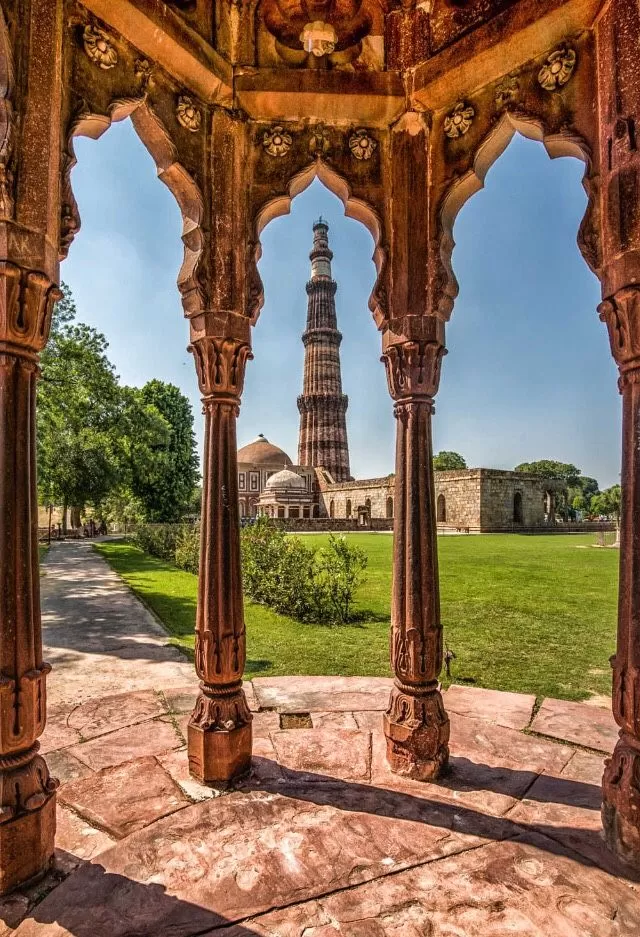
Yes, there are guided tours available for Qutub Minar.
- Tourio offers an audio guide for Qutub Minar, which can be downloaded for a fee of INR 100. The guide is GPS-enabled and provides relevant facts about the monument as you explore it.
- GetYourGuide offers tours and activities for Qutub Minar, including guided tours like the "Delhi: Old and New Delhi Guided Full or Half-Day Tour" starting from INR 2,230
Best Time To Visit Qutub Minar
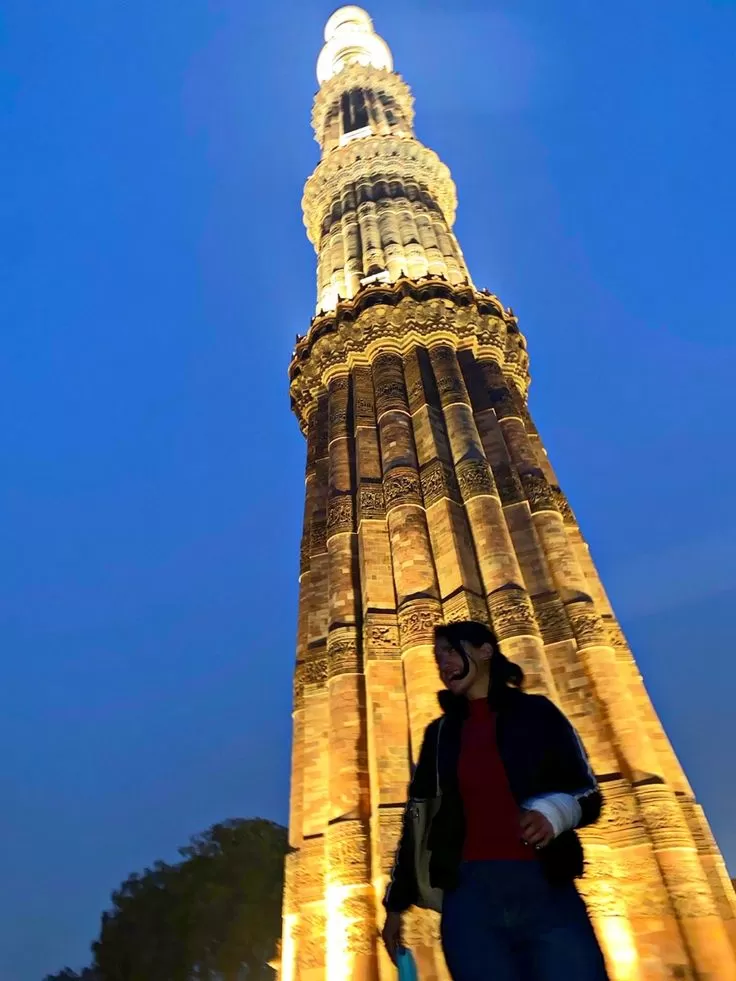
The best times to visit Qutub Minar are during the early morning or late afternoon to avoid the crowds and the heat.
Visiting on weekdays rather than weekends can help you enjoy a more peaceful experience.
The months of October to March, during the winter season, are generally considered the best time to visit Delhi.
How To Reach Qutub Minar?
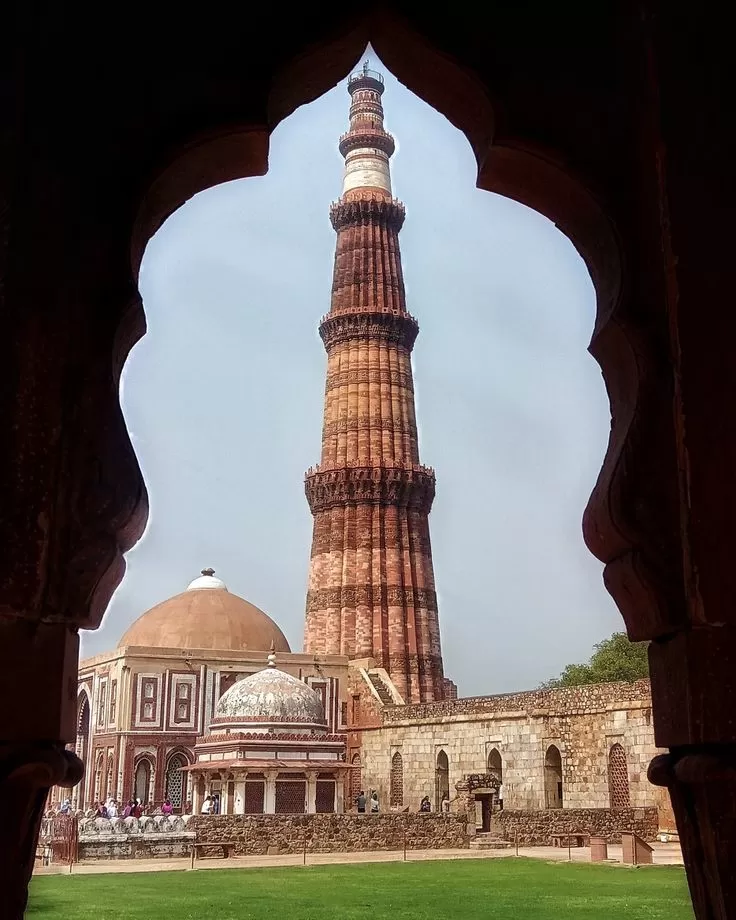
Metro: Nearest station is Qutub Minar (Yellow Line), fare around ₹50-60.
Bus: Several routes available, fares vary.
Auto-rickshaw/Taxi: Easily available, auto fare from ₹30.
Car: Well-connected by roads, parking available, fuel and parking charges apply.
Tourist Bus: Many operators offer tours including Qutub Minar, prices vary.






